
Keywords: mosquito

|
Gene drives, mosquitoes, and ecosystems: An interdisciplinary approach to emerging ethical concernsRicardo D. Moreno, Luca Valera, Cristián Borgoño, Juan Carlos Castilla, José Luis Riveros, Frontiers in Environmental Science, 11. 2023.
Gene drives are genetic elements that in sexually reproducing organisms spread faster than those transmitted through a Mendelian fashion. Since gene drives can be engineered to modify different aspects of physiology and reproduction, they have been proposed as a new and ... Keywords: dengue, malaria, microbiome, microbiome engineering, mosquito, wolbachia |
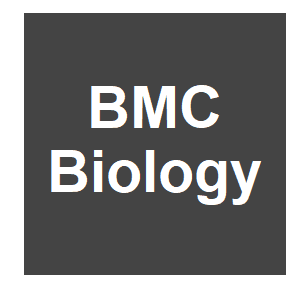
|
Different mechanisms of X-ray irradiation-induced male and female sterility in Aedes aegyptiZhang, H., Trueman, E., Hou, X. et al., BMC Biology, 21. 2023.
Aedes aegypti (Ae. aegypti) is the major vector that transmits many diseases including dengue, Zika, and filariasis in tropical and subtropical regions. Due to the growing resistance to chemical-based insecticides, biological control methods have become an emerging direction to ... Keywords: dengue, malaria, microbiome, microbiome engineering, mosquito, wolbachia |

|
Aedes aegypti microbiome composition covaries with the density of Wolbachia infectionJane Pascar, Henry Middleton & Steve Dorus, Microbiome, 11. 2023.
Wolbachia is a widespread bacterial endosymbiont that can inhibit vector competency when stably transinfected into the mosquito, Aedes aegypti, a primary vector of the dengue virus (DENV) and other arboviruses. Although a complete mechanistic understanding of pathogen blocking is ... Keywords: dengue, malaria, microbiome, microbiome engineering, mosquito, wolbachia |

|
Conceptual risk assessment of mosquito population modification gene-drive systems to control malaria transmission: preliminary hazards list workshopsA. Kormos, G. Dimopoulos, E. Bier, G. C. Lanzaro, J. M. Marshall and A. A. James, Frontiers in Bioengineering and Biotechnology, 11. 2023.
The field-testing and eventual adoption of genetically-engineered mosquitoes (GEMs) to control vector-borne pathogen transmission will require them meeting safety criteria specified by regulatory authorities in regions where the technology is being considered for use and other ... Keywords: dengue, malaria, microbiome, microbiome engineering, mosquito, wolbachia |

|
Wolbachia enhances the survival ofDrosophila infected with fungal pathogensJ. Perlmutter, I., A. Atadurdyyeva, M. Schedl, E. and R. Unckless, L., bioRxiv, 2023.09.30.560320. 2023.
Wolbachia bacteria of arthropods are at the forefront of basic and translational research on multipartite host-symbiont-pathogen interactions. These microbes are vertically inherited from mother to offspring via the cytoplasm. They are the most widespread endosymbionts on the ... Keywords: dengue, malaria, microbiome, microbiome engineering, mosquito, wolbachia |

|
Effect of 2 sex-sorting time schedules on SIT facility managementM. Malfacini, A. Puggioli, F. Balestrino, M. Carrieri, M. L. Dindo and R. Bellini, Journal of Insect Science, 23:9. 2023.
Improvements are needed in mosquito mass-rearing to effectively implement the sterile insect technique (SIT). However, managing this technique is challenging and resource intensive. SIT relies on mass rearing, sterilization, and release of adult males to reduce field populations. ... Keywords: dengue, malaria, microbiome, microbiome engineering, mosquito, wolbachia |

|
MGDrivE 3: A decoupled vector-human framework for epidemiological simulation of mosquito genetic control tools and their surveillanceA. Mondal, C. H. M. Sanchez and J. M. Marshall, bioRxiv, 2023.09.09.556958. 2023.
We present MGDrivE 3 (Mosquito Gene Drive Explorer 3), a new version of a previously-developed framework, MGDrivE 2, that investigates the spatial population dynamics of mosquito genetic control systems and their epidemiological implications. The new framework incorporates three ... Keywords: dengue, malaria, microbiome, microbiome engineering, mosquito, wolbachia |

|
Unleashing the swarm: Battling the global mosquito menace and defending public healthJ. Entine and S. Moxon, Genetic Literacy Project, 2023.
There is one solution embraced by global health experts that should be pursued aggressively, if with some caution. Scientists in real-world trials have altered the genomes of entire animal populations, including mosquitoes, to thwart the vectoring of diseases and control pests ... Keywords: dengue, malaria, microbiome, microbiome engineering, mosquito, wolbachia |

|
Generation game: gene-edited mosquitos to fight malariaJ. Opara, Sci Dev Net, 2023.
Population-level changes in the genetic make-up of one of the world’s deadliest animals could provide a key in the fight against malaria, proponents of a radical new technology argue. So-called gene drive technology, where genetic changes are passed down through generations, ... Keywords: dengue, malaria, microbiome, microbiome engineering, mosquito, wolbachia |

|
Holobiont perspectives on tripartite interactions among microbiota, mosquitoes, and pathogensR. Zheng, Q. Wang, R. Wu, P. N. Paradkar, A. A. Hoffmann and G. H. Wang, ISME, 2023.
Mosquito-borne diseases like dengue and malaria cause a significant global health burden. Unfortunately, current insecticides and environmental control strategies aimed at the vectors of these diseases are only moderately effective in decreasing disease burden. Understanding and ... Keywords: dengue, malaria, microbiome, microbiome engineering, mosquito, wolbachia |
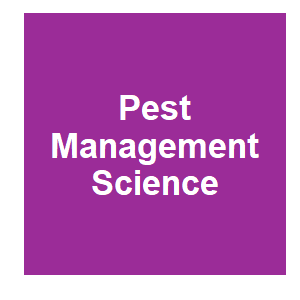
|
A bacterium against the tiger: further evidence of the potential of non-inundative releases of males with manipulated Wolbachia infection in reducing fertility of Aedes albopictus field populations in ItalyB. Caputo, R. Moretti, C. Virgillito, M. Manica, E. Lampazzi, G. Lombardi, P. Serini, V. Pichler, N. W. Beebe, A. Della Torre and M. Calvitti, Pest Management Science, 2023.
BACKGROUND: Incompatible Insect Technique (IIT) is a population suppression approach based on the release of males with manipulated Wolbachia infection inducing egg inviability in wild females. We here present results of multiple field releases of incompatible ARwP males carried ... Keywords: dengue, malaria, microbiome, microbiome engineering, mosquito, wolbachia |
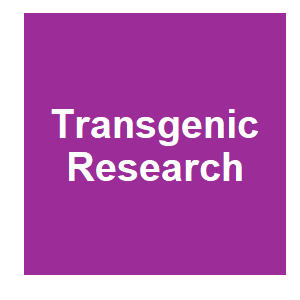
|
Regulatory and policy considerations for the implementation of gene drive-modified mosquitoes to prevent malaria transmissionS. L. James, B. Dass and H. Quemada, Transgenic Research, 2023.
Gene drive-modified mosquitoes (GDMMs) are being developed as possible new tools to prevent transmission of malaria and other mosquito-borne diseases. To date no GDMMs have yet undergone field testing. This early stage is an opportune time for developers, supporters, and possible ... Keywords: dengue, malaria, microbiome, microbiome engineering, mosquito, wolbachia |

|
A mosquito population suppression model with a saturated Wolbachia release strategy in seasonal successionZ. Zhang, L. Chang, Q. Huang, R. Yan and B. Zheng, J Math Biol, 86:51. 2023.
Releasing Wolbachia-infected male mosquitoes to suppress wild female mosquitoes through cytoplasmic incompatibility has shown great promise in controlling and preventing mosquito-borne diseases. To make the release logistically and economically feasible, we propose a saturated ... Keywords: dengue, malaria, microbiome, microbiome engineering, mosquito, wolbachia |

|
Wolbachia RNase HI contributes to virus blocking in the mosquito Aedes aegyptiM. Hussain, G. Zhang, M. Leitner, L. M. Hedges and S. Asgari, iScience, 26:105836. 2023.
The endosymbiotic bacterium Wolbachia pipientis blocks replication of several arboviruses in transinfected Aedes aegypti mosquitoes. However, the mechanism of virus blocking remains poorly understood. Here, we characterized an RNase HI gene from Wolbachia, which is rapidly ... Keywords: dengue, malaria, microbiome, microbiome engineering, mosquito, wolbachia |
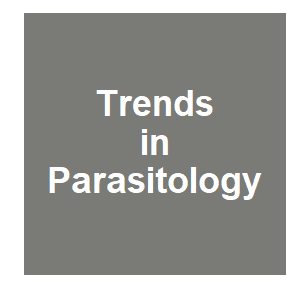
|
Cross-kingdom RNAi to enhance the efficacy of insect pathogensS. Asgari, Trends in Parasitology, 2022.
Insect pathogens play significant roles in the biocontrol of medical and agricultural pests. Cui et al. demonstrated that genetically modified (GM) fungi expressing host mosquito miRNAs could enhance the efficacy of the fungus by suppressing the host immune response. This opens ... Keywords: dengue, malaria, microbiome, microbiome engineering, mosquito, wolbachia |

|
How We’re Reducing Disease With Genetically Modified MosquitoesV. Wise, HealthMatch, 2022.
We all know mosquitoes as those annoying insects we swat away from our faces. They carry diseases, so we don’t want them anywhere near us. There are over 200 types of wild mosquitoes bugging us across America and the U.S. territories. Approximately 12 types can spread disease, ... Keywords: dengue, malaria, microbiome, microbiome engineering, mosquito, wolbachia |

|
Can a bold new plan to stop mosquitoes catch on?L. J. Young, Popular Science, 2022.
In the northwestern outskirts of Visalia in Tulare County, California, Bryan Ruiz drives down a familiar dirt road that cuts through farmland. He comes up to an irrigation pipe that’s created a “pretty nasty” situation—a small patch of vegetation and algae-covered water ... Keywords: dengue, malaria, microbiome, microbiome engineering, mosquito, wolbachia |

|
Life-history traits of a fluorescent Anopheles arabiensis genetic sexing strain introgressed into South African genomic backgroundN. L. Ntoyi, T. Mashatola, J. Bouyer, C. Kraupa, H. Maiga, W. Mamai, N. S. Bimbile-Somda, T. Wallner, D. O. Carvalho, G. Munhenga and H. Yamada, Malaria Journal, 21:12. 2022.
Background South Africa has set a mandate to eliminate local malaria transmission by 2023. In pursuit of this objective a Sterile Insect Technique programme targeting the main vector Anopheles arabiensis is currently under development. Significant progress has been made towards ... Keywords: dengue, malaria, microbiome, microbiome engineering, mosquito, wolbachia |

|
An evaluation of fusion partner proteins for paratransgenesis in Asaia bogorensisC. Grogan, M. Bennett and D. J. Lampe, Plos One, 17:18. 2022.
Mosquitoes transmit many pathogens responsible for human diseases, such as malaria which is caused by parasites in the genus Plasmodium. Current strategies to control vector-transmitted diseases are increasingly undermined by mosquito and pathogen resistance, so additional ... Keywords: dengue, malaria, microbiome, microbiome engineering, mosquito, wolbachia |
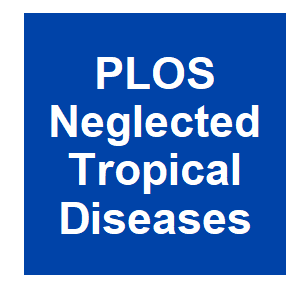
|
Intron-derived small RNAs for silencing viral RNAs in mosquito cellsP. Y. L. Tng, L. Z. Carabajal Paladino, M. A. E. Anderson, Z. N. Adelman, R. Fragkoudis, R. Noad and L. Alphey, PLOS Neglected Tropical Diseases, 16:e0010548. 2022.
Aedes aegypti and Ae. albopictus are the main vectors of mosquito-borne viruses of medical and veterinary significance. Many of these viruses have RNA genomes. Exogenously provided, e.g. transgene encoded, small RNAs could be used to inhibit virus replication, breaking the ... Keywords: dengue, malaria, microbiome, microbiome engineering, mosquito, wolbachia |
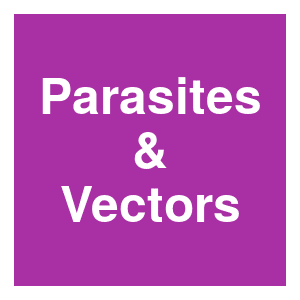
|
Sexual transmission of Anopheles gambiae densovirus (AgDNV) leads to disseminated infection in mated femalesK. L. Werling, R. M. Johnson, H. C. Metz and J. L. Rasgon, Parasites and Vectors, 15:219. 2022.
Anopheles gambiae densovirus (AgDNV) is an insect-specific, single-stranded DNA virus that infects An. gambiae sensu stricto (s.s.), the major mosquito species responsible for transmitting malaria parasites throughout sub-Saharan Africa. AgDNV is a benign virus that is very ... Keywords: dengue, malaria, microbiome, microbiome engineering, mosquito, wolbachia |
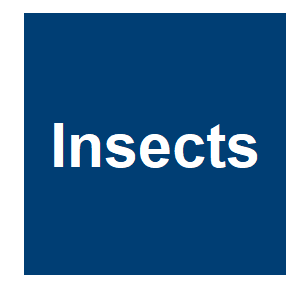
|
Current Status of Mosquito Handling, Transporting and Releasing in Frame of the Sterile Insect TechniqueJ. Guo, X. Zheng, D. Zhang and Y. Wu, Insects, 13. 2022.
The sterile insect technique (SIT) and its related technologies are considered to be a powerful weapon for fighting against mosquitoes. As an important part of the area-wide integrated pest management (AW-IPM) programs, SIT can help reduce the use of chemical pesticides for ... Keywords: dengue, malaria, microbiome, microbiome engineering, mosquito, wolbachia |

|
Wolbachia 16S rRNA haplotypes detected in wild Anopheles stephensi in eastern EthiopiaE. Waymire, S. Duddu, S. Yared, D. Getachew, D. Dengela, S. R. Bordenstein, M. Balkew, S. Zohdy, S. R. Irish and T. E. Carter, Parasites and Vectors, 15:178. 2022.
About two out of three Ethiopians are at risk of malaria, a disease caused by the parasites Plasmodium falciparum and Plasmodium vivax. Anopheles stephensi, an invasive vector typically found in South Asia and the Middle East, was recently found to be distributed across eastern ... Keywords: dengue, malaria, microbiome, microbiome engineering, mosquito, wolbachia |

|
Self-Deleting Genes Could Control Mosquitoes And Prevent Vector-Borne DiseasesA. Russell, Texas AM TODAY, 2022.
Texas A&M AgriLife Research scientists are testing a technology to make temporary genetic modifications in mosquitoes that self-delete over time. The mechanism to make temporary genetic changes could be important for scientists hoping to modify mosquitoes in ways that help manage ... Keywords: dengue, malaria, microbiome, microbiome engineering, mosquito, wolbachia |

|
The fight against malariaF. Ammache, Year 2049, 2022.
Malaria is a disease we’ve been dealing with for thousands of years. Traces of the malaria parasite have been found in the remains of Egyptian mummies. Hippocrates described the fevers caused by malaria in Ancient Greece. The mosquito-filled Pontine Marshes protected Ancient ... Keywords: dengue, malaria, microbiome, microbiome engineering, mosquito, wolbachia |

|
Self-eliminating genes tested on mosquitoesA. Russell, AGRILIFE Today, 2022.
Texas A&M AgriLife Research scientists have tested a technology to make temporary genetic modifications in mosquitoes. The modifications self-delete over time. Texas A&M AgriLife Research scientists published an article detailing a mechanism to make temporary genetic alterations ... Keywords: dengue, malaria, microbiome, microbiome engineering, mosquito, wolbachia |

|
Genetically Modified Mosquitoes May Be Released in California, Experts Express ConcernZ. Papadakis, NEWSMAX, 2022.
Millions of genetically engineered mosquitos could soon be set loose in California in an effort to curb the disease-carrying Aedes aegypti mosquito population — but some experts are concerned that it could backfire. On March 7, Oxitec, a private company, obtained a permit from ... Keywords: dengue, malaria, microbiome, microbiome engineering, mosquito, wolbachia |

|
Comparison of Ground Release and Drone-Mediated Aerial Release of Aedes aegypti Sterile Males in Southern Mexico: Efficacy and ChallengesC. F. Marina, P. Liedo, J. G. Bond, A. R. Osorio, J. Valle, R. Angulo-Kladt, Y. Gómez-Simuta, I. Fernández-Salas, A. Dor and T. Williams, Insects, 13. 2022.
Sterile males of Aedes aegypti were released once a week for 8 weeks to evaluate the dispersal efficiency of ground and aerial drone release methods in a rural village of 26 Ha in southern Mexico. Indoor and outdoor BG-Sentinel traps were placed in 13–16 houses distributed ... Keywords: dengue, malaria, microbiome, microbiome engineering, mosquito, wolbachia |
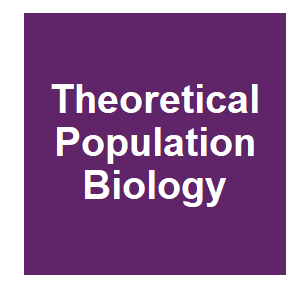
|
Gene drives and population persistence vs elimination: The impact of spatial structure and inbreeding at low densityP. J. Beaghton and A. Burt, Theoretical Population Biology, 2022.
Synthetic gene drive constructs are being developed to control disease vectors, invasive species, and other pest species. In a well-mixed random mating population a sufficiently strong gene drive is expected to eliminate a target population, but it is not clear whether the same ... Keywords: dengue, malaria, microbiome, microbiome engineering, mosquito, wolbachia |

|
Should we kill every mosquito on Earth?J. Phelan, LiveScience, 2022.
Before you grab that can of bug spray, know this: While some mosquitoes are dangerous to us, not all are. Even those that are sometimes harmful tend not to feed on humans, preferring honeydew, plant sap and nectar, according to Mosquito Joe, a mosquito control company. There are ... Keywords: dengue, malaria, microbiome, microbiome engineering, mosquito, wolbachia |

|
Increased biting rate and decreased Wolbachia density in irradiated Aedes mosquitoesR. Moretti, E. Lampazzi, C. Damiani, G. Fabbri, G. Lombardi, C. Pioli, A. Desiderio, A. Serrao and M. Calvitti, Parasites and Vectors, 15:67. 2022.
Releasing considerable numbers of radiation-sterilized males is a promising strategy to suppress mosquito vectors. However, releases may also include small percentages of biting females, which translate to non-negligible numbers when releases are large. Currently, the effects of ... Keywords: dengue, malaria, microbiome, microbiome engineering, mosquito, wolbachia |

|
A UC malaria initiative program receives grant for work researching genetically engineered mosquitoesS. Slater, The California Aggie, 2022.
Malaria, a mosquito-borne infectious disease, was discovered in 1880, and has remained widespread in tropical regions around the equator including parts of Africa, Asia and Latin America, resulting in thousands of deaths and a significant blow to economic development in these ... Keywords: dengue, malaria, microbiome, microbiome engineering, mosquito, wolbachia |

|
Evaluation of anti-malaria potency of wild and genetically modified Enterobacter cloacae expressing effector proteins in Anopheles stephensiH. Dehghan, S. H. Mosa-Kazemi, B. Yakhchali, N. Maleki-Ravasan, H. Vatandoost and M. A. Oshaghi, Parasites and Vectors, 15:63. 2022.
Malaria is one of the most lethal infectious diseases in tropical and subtropical areas of the world. Paratransgenesis using symbiotic bacteria offers a sustainable and environmentally friendly strategy to combat this disease. In the study reported here, we evaluated the ... Keywords: dengue, malaria, microbiome, microbiome engineering, mosquito, wolbachia |

|
C-type lectin 4 regulates broad-spectrum melanization-based refractoriness to malaria parasitesM. L. Simões, Y. Dong, G. Mlambo and G. Dimopoulos, PLOS Biology, 20:e3001515. 2022.
Anopheles gambiae melanization-based refractoriness to the human malaria parasite Plasmodium falciparum has rarely been observed in either laboratory or natural conditions, in contrast to the rodent model malaria parasite Plasmodium berghei that can become completely melanized by ... Keywords: dengue, malaria, microbiome, microbiome engineering, mosquito, wolbachia |

|
Could Crispr Flip the Switch on Insects’ Resistance to Pesticides?E. Mullin, WIRED, 2022.
WHILE THE COVID-19 pandemic raged across the world in 2020, another disease was quietly infecting more than 220 million people on the continent of Africa: malaria. That year, the disease led to more than 600,000 deaths, most of them children. Caused by the parasite Plasmodium, ... Keywords: dengue, malaria, microbiome, microbiome engineering, mosquito, wolbachia |

|
CRISPR Technology Can Eliminate Disease-Spreading MosquitoesS. Krishana, Now, 2022.
Scientists have uncovered a new technique they call the “precision-guided sterile insect technique,” or pgSIT. While most CRISPR procedures affect organisms that spread diseases by passing a gene change down generations, this system is more limited. It targets male mosquito ... Keywords: dengue, malaria, microbiome, microbiome engineering, mosquito, wolbachia |

|
Genetic strategy reverses insecticide resistanceM. Aguilera, Phys Org, 2022.
University of California San Diego biologists have now developed a method that reverses insecticide resistance using CRISPR/Cas9 technology. As described in Nature Communications, researchers Bhagyashree Kaduskar, Raja Kushwah and Professor Ethan Bier with the Tata Institute for ... Keywords: dengue, malaria, microbiome, microbiome engineering, mosquito, wolbachia |

|
Nuclear technique cuts mosquito numbers in Cuban trialM. A. Madsen, IAEA, 2022.
A pilot trial of a SIT campaign was conducted between April and August 2020 in an area of 50 hectares in El Cano, an isolated neighbourhood of southwest Havana. Arroyo Arenas, another neighbourhood of similar size, was used as an untreated control site. In the pilot trial, almost ... Keywords: dengue, malaria, microbiome, microbiome engineering, mosquito, wolbachia |

|
Effects of Sterile Males and Fertility of Infected Mosquitoes on Mosquito-Borne Disease DynamicsX. L. Sun, S. Q. Liu, Y. F. Lv and Y. Z. Pei, Bulletin of Mathematical Biology, 84:33. 2022.
By studying an infection-age structured model, we consider the effects of releasing sterile males and the fertility of infected mosquitoes on the mosquito-borne diseases transmission including the extinction of mosquitoes, the elimination and persistence of diseases. Firstly, ... Keywords: dengue, malaria, microbiome, microbiome engineering, mosquito, wolbachia |

|
Reversing insecticide resistance with allelic-drive in Drosophila melanogasterB. Kaduskar, R. B. S. Kushwah, A. Auradkar, A. Guichard, M. Li, J. B. Bennett, A. H. F. Julio, J. M. Marshall, C. Montell and E. Bier, Nature Communications, 13:291. 2022.
A recurring target-site mutation identified in various pests and disease vectors alters the voltage gated sodium channel (vgsc) gene (often referred to as knockdown resistance or kdr) to confer resistance to commonly used insecticides, pyrethroids and DDT. The ubiquity of kdr ... Keywords: dengue, malaria, microbiome, microbiome engineering, mosquito, wolbachia |

|
The prince, the mayor, and the U.S. fish that ate JapanC. Elliot, National Geographic, 2022.
When Crown Prince Akihito visited Chicago on October 3, 1960, his sole request was to visit Shedd Aquarium. Then Mayor Richard J. Daley, an avid angler, presented the prince with a gift that he scooped with a net from one of the tanks himself: 18 bluegills, the official Illinois ... Keywords: dengue, malaria, microbiome, microbiome engineering, mosquito, wolbachia |
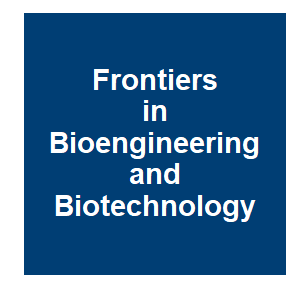
|
Introgression of the Aedes aegypti red-eye genetic sexing strains into different genomic backgrounds for sterile insect technique applicationsA. A. Augustinos , K. Nikolouli , L. D. De La Fuente , M. Misbah-Ul-Haq, D. O. Carvalho and K. Bourtzis, Frontiers in Bioengineering and Biotechnology, 2022.
Aedes aegypti is an invasive mosquito species and major vector of human arboviruses. A wide variety of control methods have been employed to combat mosquito populations. One of them is the sterile insect technique (SIT) that has recently attracted considerable research efforts ... Keywords: dengue, malaria, microbiome, microbiome engineering, mosquito, wolbachia |

|
Lab-scale characterization and semi-field trials of Wolbachia Strain wAlbB in a Taiwan Wolbachia introgressed Ae. aegypti strainW. L. Liu, H. Y. Yu, Y. X. Chen, B. Y. Chen, S. N. Leaw, C. H. Lin, M. P. Su, L. S. Tsai, Y. Chen, S. H. Shiao, Z. Y. Xi, A. C. C. Jang and C. H. Chen, PLOS Neglected Tropical Diseases, 16:24. 2022.
Author summaryPrior to open field release, new genetic approaches that interfere with mosquito abilities and reduce mosquito population density require progressive evaluation both in the laboratory and contained field trials. Trials in contained outdoor systems are thus an ... Keywords: dengue, malaria, microbiome, microbiome engineering, mosquito, wolbachia |

|
The Need for a Tiered Registry for US Gene Drive GovernanceK. L. Warmbrod, A. L. Kobokovich, R. West, G. K. Gronvall and M. Montague, Health Security, 2022.
A great deal of attention has been focused on the potential risks of gene drives, the kinds of biosafety protections they may require, and how they may be reversed; however, less attention has been paid to the systems that would be useful to have in place in the future, when ... Keywords: dengue, malaria, microbiome, microbiome engineering, mosquito, wolbachia |

|
Information Sharing in Senegal on the Gene Drive Technology as a potential Complementary Tool for Malaria Vector ControlAUDA-NEPAD, AUDA-NEPAD, 2022.
AUDA-NEPAD in partnership with the National Biosafety Authority (Autorité Nationale de Biosécurité (ANB) in Senegal organized an Information sharing meeting on the gene drive technology as a complementary tool for malaria vector control, from 22-23 December 2021, in Somone, ... Keywords: dengue, malaria, microbiome, microbiome engineering, mosquito, wolbachia |

|
Driving the Self-Destruction of Malaria-Transmitting MosquitosH. Aliouche, News Medical Life Sciences, 2021.
Self-destruction of malaria-transmitting mosquitoes can be driven by gene drives deployed to manipulate natural populations. In particular, they can be used to reduce the number of individuals in a population or to modify their composition; this is particularly useful when such ... Keywords: dengue, malaria, microbiome, microbiome engineering, mosquito, wolbachia |

|
Temporal Viability of Aedes aegypti and Aedes albopictus Eggs Using Two Hygroscopic Substances as Preservatives under a Sterile Insect Technique (SIT) Program in Southern MexicoE. N. Martínez-García, E. E. Díaz-González, C. F. Marina, J. G. Bond, J. J. Rodríguez-Rojas, G. Ponce-García, R. M. Sánchez-Casas and I. Fernández-Salas, Insects, 13. 2021.
Dengue and other Aedes-borne diseases have dramatically increased over the last decades. The Sterile Insect Technique (SIT) has been successfully used as part of integrated pest strategies to control populations of insect-plant and livestock pests and is currently being tested as ... Keywords: dengue, malaria, microbiome, microbiome engineering, mosquito, wolbachia |

|
Integrated Management of Malaria Vectors in AfricaR. Mbabazi, K. Maredia, B. B. El-Sayed, A. K. Babumba, M. Savadogo and O. Akinbo, Genetically Modified and other Innovative Vector Control Technologies, 2021.
Malaria disease is a major public health burden in Africa. The control of malaria vectors is a critical component for prevention, management, and eradication of malaria disease. This chapter presents information on the current status of malaria vector control in Africa with ... Keywords: dengue, malaria, microbiome, microbiome engineering, mosquito, wolbachia |

|
Genetic Improvements to the Sterile Insect Technique (SIT) for the Control of Mosquito PopulationP. V. D. Dilani, Y. I. N. S. Gunawardene and R. S. Dassanayake, Genetically Modified and other Innovative Vector Control Technologies, 2021.
Mosquito-borne diseases are becoming a major health problem worldwide. At present, the principal method of controlling these diseases entirely depends on the mosquito vector control strategies. However, traditional control methods which are focussed on reducing mosquito ... Keywords: dengue, malaria, microbiome, microbiome engineering, mosquito, wolbachia |

|
Towards Integrated Management of Dengue in MumbaiP. N. Paradkar, P. R. Sahasrabudhe, M. Ghag Sawant, S. Mukherjee and K. R. Blasdell, Viruses, 13. 2021.
With increasing urbanisation, the dengue disease burden is on the rise in India, especially in large cities such as Mumbai. Current dengue surveillance in Mumbai includes municipal corporation carrying out specific activities to reduce mosquito breeding sites and the use of ... Keywords: dengue, malaria, microbiome, microbiome engineering, mosquito, wolbachia |
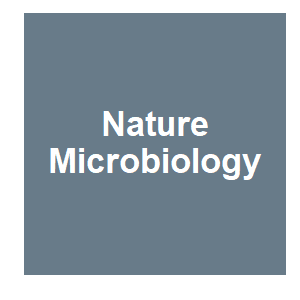
|
Wolbachia cifB induces cytoplasmic incompatibility in the malaria mosquito vectorK. L. Adams, D. G. Abernathy, B. C. Willett, E. K. Selland, M. A. Itoe and F. Catteruccia, Nature Microbiology, 6:1575-1582. 2021.
Wolbachia, a maternally inherited intracellular bacterial species, can manipulate host insect reproduction by cytoplasmic incompatibility (CI), which results in embryo lethality in crosses between infected males and uninfected females. CI is encoded by two prophage genes, cifA ... Keywords: dengue, malaria, microbiome, microbiome engineering, mosquito, wolbachia |

|
Gene drives and population persistence vs elimination: the impact of spatial structure and inbreeding at low densityP. J. Beaghton and A. Burt, bioRxiv, 2021.11.11.468225. 2021.
Synthetic gene drive constructs are being developed to control disease vectors, invasive species, and other pest species. In a well-mixed random mating population a sufficiently strong gene drive is expected to eliminate a target population, but it is not clear whether the same ... Keywords: dengue, malaria, microbiome, microbiome engineering, mosquito, wolbachia |

|
High Temperature Cycles Result in Maternal Transmission and Dengue Infection Differences Between Wolbachia Strains in Aedes aegyptiM. V. Mancini, T. H. Ant, C. S. Herd, J. Martinez, S. M. Murdochy, D. D. Gingell, E. Mararo, P. C. D. Johnson and S. P. Sinkins, mBio, e0025021. 2021.
Environmental factors play a crucial role in the population dynamics of arthropod endosymbionts, and therefore in the deployment of Wolbachia symbionts for the control of dengue arboviruses. The potential of Wolbachia to invade, persist, and block virus transmission depends in ... Keywords: dengue, malaria, microbiome, microbiome engineering, mosquito, wolbachia |

|
Will freeing ourselves (forever) from mosquitoes soon be a realizable “dream”? Pros and cons of an epochal turning point – breaking latest newsAnnonymous, Breaking Latest News, 2021.
Also true for a dangerous insect like the mosquito: due to the pathologies of which vector, such as the malaria, the dengue o la yellow fever, every year in the world about 800 thousand people die. There are therefore quite a few reasons to want to get rid of it, not just the ... Keywords: dengue, malaria, microbiome, microbiome engineering, mosquito, wolbachia |
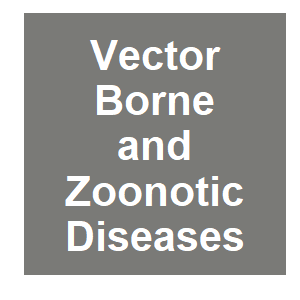
|
Containment Practices for Arthropods Modified with Engineered Transgenes Capable of Gene Drive Addendum 1 to the Arthropod Containment Guidelines, Version 3.2American Committee of Medical Entomology, Vector-Borne and Zoonotic Diseases, 2021.
Responsible conduct of research is a cornerstone of rigorous scientific discovery. Institutional committees, independent advisory panels, and expert steering groups are among the frameworks in academia meant to provide guidance and assurances that research activities do not ... Keywords: dengue, malaria, microbiome, microbiome engineering, mosquito, wolbachia |

|
Gene drive revolution: How genetically tweaked mosquitoes could tip the balance in the battle to contain malariaF. Okumu, Genetic Literacy Project, 2021.
In 2016, a World Health Organisation (WHO) panel concluded that even with the best use of current approaches, there would still be 11 million malaria cases in 2050. What’s needed are longer-term integrated strategies to complement current methods. These may include large-scale ... Keywords: dengue, malaria, microbiome, microbiome engineering, mosquito, wolbachia |

|
Africa must not rest until Malaria rests: What is the role of emerging technologies?R. Oronje, AFIDEP, 2021.
As we mark the World Mosquito Day today, it is a sad reminder that Malaria still kills hundreds of thousands of people every year, majority of these people in Africa. According to the World Health Organisation (WHO), Malaria killed 409,000 people in 2019, and 94% of these deaths ... Keywords: dengue, malaria, microbiome, microbiome engineering, mosquito, wolbachia |

|
Breakthrough in non-GMO malaria controlC. Robinson and J. Matthews, GM Watch, 2021.
A just-published study carried out in a high-security lab claims to show that a CRISPR gene drive (a way of forcing a heritable genetic modification through a whole species or population) can crash populations of malaria-spreading mosquitoes. But why crash mosquito populations ... Keywords: dengue, malaria, microbiome, microbiome engineering, mosquito, wolbachia |

|
Yes, genetically modified mosquitoes do exist, but they don’t bite and aren’t harmful to humansE. Jones and M. Chamberlin, WKYC Studios, 2021.
In 2021, Oxitec, a biotechnology company that develops genetically modified insects that safely and sustainably control pests that spread disease, damage crops and harm livestock across the globe, partnered with the Florida Keys Mosquito Control District (FKMCD) to evaluate the ... Keywords: dengue, malaria, microbiome, microbiome engineering, mosquito, wolbachia |

|
Gene Drives – Engineering the WildL. Sharratt, Sentinel, 2021.
So far, genetically engineered organisms have been mostly limited to agricultural use, with partial success. Around the world, a few major crops (mostly corn, soy, and cotton) are genetically engineered, predominantly for herbicide tolerance and insect resistance. However, the ... Keywords: dengue, malaria, microbiome, microbiome engineering, mosquito, wolbachia |

|
Scientists develop new technology that gives greater control for managing malaria mosquitoesKeele University, Phy Org, 2021.
Researchers including a Keele University scientist have engineered an innovative approach to disable highly powerful genetic devices that control harmful insect populations. Dr. Roberto Galizi from Keele's School of Life Sciences was part of a research team that previously ... Keywords: dengue, malaria, microbiome, microbiome engineering, mosquito, wolbachia |

|
A genetically encoded anti-CRISPR protein constrains gene drive spread and prevents population suppressionC. Taxiarchi, A. Beaghton, N. I. Don, K. Kyrou, M. Gribble, D. Shittu, S. P. Collins, C. L. Beisel, R. Galizi and A. Crisanti, Nature Communications, 12:3977. 2021.
CRISPR-based gene drives offer promising means to reduce the burden of pests and vector-borne diseases. These techniques consist of releasing genetically modified organisms carrying CRISPR-Cas nucleases designed to bias their inheritance and rapidly propagate desired ... Keywords: dengue, malaria, microbiome, microbiome engineering, mosquito, wolbachia |
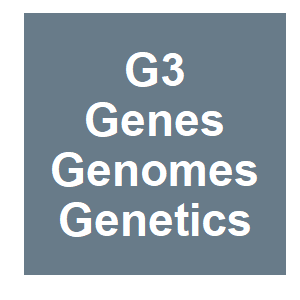
|
CRISPR-mediated knock-in of transgenes into the malaria vector Anopheles funestusC. Quinn, A. Anthousi, C. Wondji and T. Nolan, G3 Genes Genomes Genetics, 11. 2021.
The ability to introduce mutations, or transgenes, of choice to precise genomic locations has revolutionized our ability to understand how genes and organisms work. In many mosquito species that are vectors of various human diseases, the advent of CRISPR genome editing tools has ... Keywords: dengue, malaria, microbiome, microbiome engineering, mosquito, wolbachia |

|
Fine-scale estimation of key life-history parameters of malaria vectors: implications for next-generation vector control technologiesA. L. Morris, A. Ghani and N. Ferguson, Parasites and Vectors, 14:311. 2021.
Mosquito control has the potential to significantly reduce malaria burden on a region, but to influence public health policy must also show cost-effectiveness. Gaps in our knowledge of mosquito population dynamics mean that mathematical modelling of vector control interventions ... Keywords: dengue, malaria, microbiome, microbiome engineering, mosquito, wolbachia |

|
What is wrong in extinguishing a species? Charting the Ethical Challenges of using Gene-Drive Technologies to eradicate A. gambiae vector populationsM. Annoni and T. Pievani, Biolaw Journal-Rivista Di Biodiritto, 2021.
This article analyses three ethical arguments against the use of gene-drive technologies to control for, and possibly extinguish, a particular species of vector mosquitoes (Anopheles gambiae) causing the malaria infection. We conclude that none of these arguments is truly ... Keywords: dengue, malaria, microbiome, microbiome engineering, mosquito, wolbachia |

|
Why the EU should back research into gene drive – even if Europe never uses itR. Müller, The Brussels Times, 2021.
As the EU’s Biodiversity Strategy reaches the European Parliament, it has reopened a worrying debate about research into gene drive technology, a tool which could pave the way for biasing the inheritance of desired genetic traits through targeted species. Advances in this kind ... Keywords: dengue, malaria, microbiome, microbiome engineering, mosquito, wolbachia |

|
Small-Cage Laboratory Trials of Genetically-Engineered Anopheline MosquitoesR. Carballar-Lejarazú, T. B. Pham, V. Bottino-Rojas, A. Adolfi and A. A. James, J Vis Exp, 2021.
Control of mosquito-borne pathogens using genetically-modified vectors has been proposed as a promising tool to complement conventional control strategies. CRISPR-based homing gene drive systems have made transgenic technologies more accessible within the scientific community. ... Keywords: dengue, malaria, microbiome, microbiome engineering, mosquito, wolbachia |

|
Modeling and analysis of the implementation of the Wolbachia incompatible and sterile insect technique for mosquito population suppression.B. Zheng, J. S. Yu and J. Li, Siam Journal on Applied Mathematics, 81:718-740. 2021.
Mathematical analysis may offer guidance in designing effective mass release strategies for the area-wide application of this Wolbachia incompatible and sterile insect technique in the future. The two most crucial concerns in designing release strategies are how often and in what ... Keywords: dengue, malaria, microbiome, microbiome engineering, mosquito, wolbachia |

|
CRISPR-mediated knock-in of transgenes into the malaria vector Anopheles funestusC. Quinn, A. Anthousi, C. Wondji and T. Nolan, bioRxiv, 2021.03.31.437891. 2021.
We describe herein an optimised transformation system based on the germline delivery of CRISPR components that allows efficient cleavage of a previously validated genomic site and preferential repair of these cut sites via homology-directed repair (HDR), which allows introduction ... Keywords: dengue, malaria, microbiome, microbiome engineering, mosquito, wolbachia |

|
Double drives and private alleles for localised population genetic controlK. Willis and A. Burt, PLOS Genetics, 17. 2021.
ynthetic gene drive systems that are able to spread though populations because they are inherited at a greater-than-Mendelian rate have the potential to form the basis for new, highly efficient pest control measures. The most efficient such strategies use natural gene flow to ... Keywords: dengue, malaria, microbiome, microbiome engineering, mosquito, wolbachia |
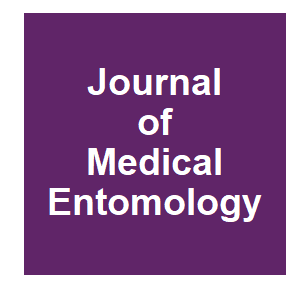
|
Current Effector and Gene-Drive Developments to Engineer Arbovirus-Resistant Aedes aegypti (Diptera: Culicidae) for a Sustainable Population Replacement Strategy in the FieldW. R. Reid, K. E. Olson and A. W. E. Franz, J Med Entomol, 2021.
Conventional mosquito control efforts based on insecticide treatments and/or the use of bednets and window curtains are currently insufficient to reduce arbovirus prevalence in affected regions. Novel, genetic strategies that are being developed involve the genetic manipulation ... Keywords: dengue, malaria, microbiome, microbiome engineering, mosquito, wolbachia |

|
femaleless Controls Sex Determination and Dosage Compensation Pathways in Females of Anopheles MosquitoesE. Krzywinska, L. Ferretti, J. Li, J.-C. Li, C.-H. Chen and J. Krzywinski, Current Biology, 31:1084-1091.e4. 2021.
Here we show that in the African malaria mosquito Anopheles gambiae, a gene, which likely arose in the Anopheles lineage and which we call femaleless (fle), controls sex determination in females by regulating splicing of dsx and fruitless (fru; another terminal gene within a ... Keywords: dengue, malaria, microbiome, microbiome engineering, mosquito, wolbachia |

|
Sex Determination and Dosage Compensation: femaleless Is the Link in Anopheles MosquitoesM. Scott, Current Biology, 31:R260-R263. 2021.
A new study finds that the femaleless gene is essential for sexual development and repression of X-chromosome dosage compensation in the malaria vector Anopheles gambiae. This could provide the basis for a new genetic approach to control this pest. Keywords: dengue, malaria, microbiome, microbiome engineering, mosquito, wolbachia |

|
Eliminating Mosquitoes with Precision Guided Sterile MalesM. Li, T. Yang, M. Bui, S. Gamez, T. Wise, N. P. Kandul, J. Liu, L. Alcantara, H. Lee, J. R. Edula, R. Raban, Y. Zhan, Y. Wang, N. DeBeaubien, J. Chen, H. M. Sanchez C, J. B. Bennett, I. Antoshechkin, C. Montell, J. M. Marshall and O. S. Akbari, bioRxiv, 2021.03.05.434167. 2021.
Here we develop a molecular genetic control system termed precision guided sterile insect technique (pgSIT) in Aedes aegypti. PgSIT uses a simple CRISPR-based approach to generate sterile males that are deployable at any life stage. Supported by mathematical models, we ... Keywords: dengue, malaria, microbiome, microbiome engineering, mosquito, wolbachia |

|
In Uganda, genetically modified mosquitoes bring hope and fearAnonymous, africanews, 2021.
Scientists here are investigating whether populations of the malaria-carrying insects can be reduced by genetic modification. They're looking at the viability of releasing large numbers of genetically modified mosquitos into the wild to influence future generations. The study ... Keywords: dengue, malaria, microbiome, microbiome engineering, mosquito, wolbachia |

|
Knowledge, Attitude, and Practices Survey in Greece before the Implementation of Sterile Insect Technique against Aedes albopictusA. Stefopoulou, S. L. LaDeau, N. Syrigou, G. Balatsos, V. Karras, I. Lytra, E. Boukouvala, D. P. Papachristos, P. G. Milonas, A. Kapranas, P. Vahamidis and A. Michaelakis, Insects, 12. 2021.
A KAP tool was used to shed light on the knowledge, practices, and attitudes of local community members in order to better prepare and motivate participation in household mosquito control and to assess current understanding of SIT. Each household also received specific ... Keywords: dengue, malaria, microbiome, microbiome engineering, mosquito, wolbachia |

|
Mosquitoes genetically modified to be resistant to ZikaStaff, Lab+Life Scientist, 2021.
Researchers have wrestled with different strategies for controlling the spread of Zika virus, which is transmitted to humans from female mosquito bites. One approach, which has been approved by the US Environmental Protection Agency, will see more than 750 million genetically ... Keywords: dengue, malaria, microbiome, microbiome engineering, mosquito, wolbachia |

|
Regulating the expression of gene drives is key to increasing their invasive potential and the mitigation of resistanceA. Hammond, X. Karlsson, I. Morianou, K. Kyrou, A. Beaghton, M. Gribble, N. Kranjc, R. Galizi, A. Burt, A. Crisanti and T. Nolan, PLOS Genetics, 17:e1009321. 2021.
Here we show that restricting the cutting activity of the gene drive to the germline tissue is crucial to maintaining its potency and we illustrate how failure to restrict this activity can lead to the generation of mutations that can make mosquitoes resistant to the gene drive. Keywords: dengue, malaria, microbiome, microbiome engineering, mosquito, wolbachia |

|
Sexual Competitiveness and Induced Egg Sterility by Aedes aegypti and Aedes albopictus Gamma-Irradiated Males: A Laboratory and Field Study in MexicoJ. G. Bond, S. Aguirre-Ibáñez, A. R. Osorio, C. F. Marina, Y. Gómez-Simuta, R. Tamayo-Escobar, A. Dor, P. Liedo, D. O. Carvalho and T. Williams, Insects, 12. 2021.
The sterile insect technique may prove useful for the suppression of mosquito vectors of medical importance in regions where arboviruses pose a serious public health threat. In the present study, we examined the effects of sterilizing irradiation doses across different ratios of ... Keywords: dengue, malaria, microbiome, microbiome engineering, mosquito, wolbachia |

|
Genetically-modified mosquitoes key to stopping Zika virus spreadUniversity of Missouri, Medical Xpress, 2021.
Alexander Franz, an associate professor in the MU College of Veterinary Medicine, collaborated with researchers at Colorado State University by using CRISPR gene-editing technology to produce mosquitoes that are unable to replicate Zika virus and therefore cannot infect a human ... Keywords: dengue, malaria, microbiome, microbiome engineering, mosquito, wolbachia |

|
Exploring Gene Drive Technologies in Agriculture, Biodiversity and Human DiseaseThe GBIRd Partnership and The GeneConvene Global Collaborative, Gene Drive Research Forum, 2021.
The GBIRd Partnership and The GeneConvene Global Collaborative recently collaborated through The Gene Drive Research Forum, to create and produce an engaging conversation between Drs. Fred Gould and Charles Godfray about gene drive technologies – the potential benefits and ... Keywords: dengue, malaria, microbiome, microbiome engineering, mosquito, wolbachia |

|
CRISPR and the splice to survive: New gene-editing technology could be used to save species from extinction—or to eliminate them.E. Kolbert, New Yorker, 2021.
About a year ago, not long before the pandemic began, I paid a visit to the center, which is an hour southwest of Melbourne. The draw was an experiment on a species of giant toad known familiarly as the cane toad. The toad was introduced to Australia as an agent of pest control, ... Keywords: dengue, malaria, microbiome, microbiome engineering, mosquito, wolbachia |

|
Double drives and private alleles for localised population genetic controlK. Willis and A. Burt, bioRxiv, 2021.01.08.425856. 2021.
In this paper we propose and model a series of low threshold double drive designs for population suppression, each consisting of two constructs, one imposing a reproductive load on the population and the other inserted into a differentiated locus and controlling the drive of the ... Keywords: dengue, malaria, microbiome, microbiome engineering, mosquito, wolbachia |

|
Self-Deleting Genes Project To Tackle Mosquito-Borne DiseasesD. Ozdemir, INTERESTING ENGINEERING, 2021.
Did you know that mosquitoes kill at least 725,000 persons every year? They truly are one of the world's deadliest animals which is the reason why scientists from all around are trying to find new ways of dealing with them. Controlling mosquito populations and preventing them ... Keywords: dengue, malaria, microbiome, microbiome engineering, mosquito, wolbachia |

|
Mosquito Sexual Selection and Reproductive Control ProgramsL. J. Cator, C. A. S. Wyer and L. C. Harrington, Trends in Parasitology, 37:330-339. 2021.
The field of mosquito mating biology has experienced a considerable expansion in the past decade. Recent work has generated many key insights about specific aspects of mating behavior and physiology. Here, we synthesize these findings and classify swarming mosquito systems as ... Keywords: dengue, malaria, microbiome, microbiome engineering, mosquito, wolbachia |

|
Mosquito Sexual Selection and Reproductive Control ProgramsL. J. Cator, C. A. S. Wyer and L. C. Harrington, Trends in Parasitology, 2021.
Recent work has generated many key insights about specific aspects of mating behavior and physiology. Here, we synthesize these findings and classify swarming mosquito systems as polygynous. Male mating success is highly variable in swarms and evidence suggests that it is likely ... Keywords: dengue, malaria, microbiome, microbiome engineering, mosquito, wolbachia |

|
His Passion Was ContagiousD. C. McCool, Notre Dame Magazine, 2021.
Craig was an entomologist and vector biologist whose interest in mosquitoes and the diseases they transmit to people was as contagious as the pathogens themselves. Hesburgh could not have chosen a more driven faculty member. In his 38 years at Notre Dame, before he died in 1995 ... Keywords: dengue, malaria, microbiome, microbiome engineering, mosquito, wolbachia |

|
Self-deleting genes promise risk-free genetic engineering of mosquitoesD. Quick, New Atlas, 2020.
A new project by Texas A&M AgriLife Research is looking to enable "test runs" of genetic changes to mosquitoes that are automatically deleted. Various angles of attack using genetic engineering to combat mosquitoes have been pursued in recent years, including modifying them so ... Keywords: dengue, malaria, microbiome, microbiome engineering, mosquito, wolbachia |

|
Self-deleting genes to be tested as part of mosquito population control conceptB. Hays, UPI, 2020.
Scientists at Texas A&M have developed a new technique for altering the genes of mosquitoes -- the new technology will cause genetic changes to self-delete from the mosquitoes' genome. Thanks to the breakthrough, described Monday in the Philosophical Transactions of the Royal ... Keywords: dengue, malaria, microbiome, microbiome engineering, mosquito, wolbachia |

|
$3.9M project on self-deleting genes takes aim at mosquito-borne diseasesO. Kuchment, AGRILIFE Today, 2020.
To control mosquito populations and prevent them from transmitting diseases such as malaria, many researchers are pursuing strategies in mosquito genetic engineering. A new Texas A&M AgriLife Research project aims to enable temporary “test runs” of proposed genetic changes in ... Keywords: dengue, malaria, microbiome, microbiome engineering, mosquito, wolbachia |

|
Self-deleting genes tested as part of the concept of mosquito population controlcharlottelarson, NEWYORK NEWS TIMES, 2020.
Most genetic engineering strategies designed to control mosquito populations, and their ability to spread diseases such as malaria, require gene editing to be combined with gene drives. Gene drives allow altered DNA to spread rapidly throughout the population. Keywords: dengue, malaria, microbiome, microbiome engineering, mosquito, wolbachia |

|
Genetic sexing strains for the population suppression of the mosquito vector Aedes aegyptiP. Koskinioti, A. A. Augustinos, D. O. Carvalho, M. Misbah-ul-Haq, G. Pillwax, L. D. d. l. Fuente, G. Salvador-Herranz, R. A. Herrero and K. Bourtzis, Philosophical Transactions of the Royal Society B: Biological Sciences, 376:20190808. 2020.
Here, we report on the construction of two genetic sexing strains using red- and white-eye colour mutations as selectable markers. Quality control analysis showed that the Red-eye genetic sexing strains (GSS) is better and more genetically stable than the White-eye GSS. The ... Keywords: dengue, malaria, microbiome, microbiome engineering, mosquito, wolbachia |

|
A patent review on strategies for biological control of mosquito vectorK. Parihar, M. Telang and A. Ovhal, World Journal of Microbiology and Biotechnology, 36:23. 2020.
This paper presents a comprehensive technology overview of patent documents disclosing biological agents for mosquito control. The patent analysis revealed that comparable number of patent documents were filed in two technology categories: non-recombinant agents and genetically ... Keywords: dengue, malaria, microbiome, microbiome engineering, mosquito, wolbachia |

|
A Gene Drive Could Wipe Out Mosquitoes. But What If We Want To Turn It Off?A. Winkler, freethink, 2020.
Gene drives are powerful tools: they allow scientists to hack how animals pass down genes to their offspring. They could allow us to wipe out malaria-carrying mosquitoes, preserve endangered species, or fight off crop-eating pests. But once it's out in the wild, a gene drive ... Keywords: dengue, malaria, microbiome, microbiome engineering, mosquito, wolbachia |

|
Targeting female flight for genetic control of mosquitoesD. Navarro-Payá, I. Flis, M. A. E. Anderson, P. Hawes, M. Li, O. S. Akbari, S. Basu and L. Alphey, PLOS Neglected Tropical Diseases, 14:e0008876. 2020.
The yellow fever mosquito and the Southern house mosquito are important vectors of infectious diseases. Given their widespread presence across tropical and subtropical regions of the world and the increased risk of spread due to global warming there is a growing need for ... Keywords: dengue, malaria, microbiome, microbiome engineering, mosquito, wolbachia |

|
Evaluating Gene Drive Approaches for Public BenefitM. R. Santos, GMOs: Implications for Biodiversity Conservation and Ecological Processes, 2020.
Gene drive approaches—those which bias inheritance of a genetic element in a population of sexually reproducing organisms—have the potential to provide important public benefits. The spread of selected genetic elements in wild populations of organisms may help address certain ... Keywords: dengue, malaria, microbiome, microbiome engineering, mosquito, wolbachia |
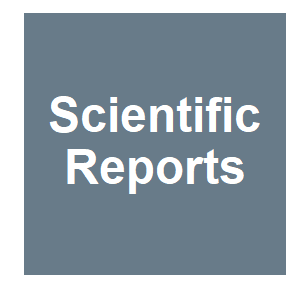
|
Split drive killer-rescue provides a novel threshold-dependent gene driveM. P. Edgington, T. Harvey-Samuel and L. Alphey, Scientific Reports, 10:13. 2020.
We show that although end-joining repair mechanisms may cause the system to break down, under certain conditions, it should persist over time scales relevant for genetic control programs. The potential of such a system to provide localised population suppression via sex ratio ... Keywords: dengue, malaria, microbiome, microbiome engineering, mosquito, wolbachia |

|
Assessment of a Novel Adult Mass-Rearing Cage for Aedes albopictus (Skuse) and Anopheles arabiensis (Patton).H. Maïga, W. Mamai, N. S. Bimbilé Somda, T. Wallner, B. S. Poda, G. Salvador-Herranz, R. Argiles-Herrero, H. Yamada and J. Bouyer, Insects, 11:801. 2020.
Successful implementation of the sterile insect technique (SIT) against Aedes albopictus and Anopheles arabiensis relies on a continuous supply of sterile males. To meet this requirement, optimization of the mass-rearing techniques is needed. This study, therefore, aims to assess ... Keywords: dengue, malaria, microbiome, microbiome engineering, mosquito, wolbachia |

|
Brave New Planet: Reshaping Nature Through Gene DrivesE. Lander, Brave New Planet, 2020.
A new technology, called gene drives, has the power to spread any genetic instructions you wish across an entire animal or plant species in the wild. It might let us restore ecosystems ravaged by invasive species, or help species adapt to climate change. And, it might save ... Keywords: dengue, malaria, microbiome, microbiome engineering, mosquito, wolbachia |

|
Gene Drives: A Controversial Tool to Fight MalariaH. Albert, LABIOTECH.eu, 2020.
The possibility of creating gene drives was introduced into the scientific community in 2003 by Austin Burt, a professor at Imperial College London. Burt was studying ‘selfish genes’ that can copy themselves into a specific target DNA sequence. He suggested that these genes, ... Keywords: dengue, malaria, microbiome, microbiome engineering, mosquito, wolbachia |
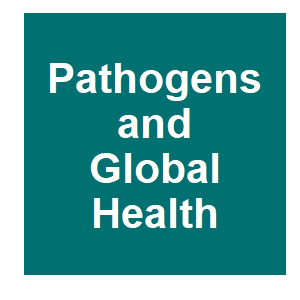
|
Cellular mechanisms regulating synthetic sex ratio distortion in the Anopheles gambiae germlineR. E. Haghighat-Khah, A. Sharma, M. R. Wunderlich, G. Morselli, L. A. Marston, C. Bamikole, A. Hall, N. Kranjc, C. Taxiarchi, I. Sharakhov and R. Galizi, Pathogens and Global Health, 114:370-378. 2020.
Meiotic cleavage of rDNA repeats, located in the sex chromosomes of A. gambiae SD males, affects the competitiveness of mature sperm to fertilize the female oocyte. Keywords: dengue, malaria, microbiome, microbiome engineering, mosquito, wolbachia |
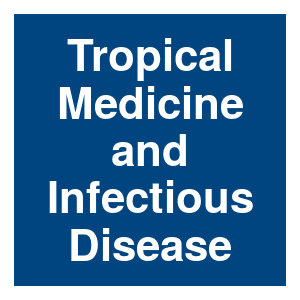
|
Vector-Focused Approaches to Curb Malaria Transmission in the Brazilian Amazon: An Overview of Current and Future Challenges and StrategiesE. M. Rocha, R. D. Katak, J. C. de Oliveira, M. D. Araujo, B. C. Carlos, R. Galizi, F. Tripet, O. Marinotti and J. A. Souza, Tropical Medicine and Infectious Disease, 5. 2020.
Here we present an overview on both conventional and novel promising vector-focused tools to curb malaria transmission in the Brazilian Amazon. If well designed and employed, vector-based approaches may improve the implementation of malaria-control programs, particularly in ... Keywords: dengue, malaria, microbiome, microbiome engineering, mosquito, wolbachia |

|
Fruit fly breakthrough puts killer mozzies on noticeV. Tressider, The Lighthouse, 2020.
A new designer fruit fly paves the way for scientists to replace disease-carrying mosquitoes with harmless, genetically modified versions, says Macquarie University researcher Dr Maciej Maselko. Keywords: dengue, malaria, microbiome, microbiome engineering, mosquito, wolbachia |

|
WHO Releases a Position Statement on Genetically Modified Mosquitoes for the Control of Vector-Borne DiseasesE. R. Fletcher, Health Policy Watch, 2020.
WHO announced their support for the continued investigation into genetically modified mosquitoes as an alternative to existing interventions to reduce or prevent vector-borne diseases. Keywords: dengue, malaria, microbiome, microbiome engineering, mosquito, wolbachia |
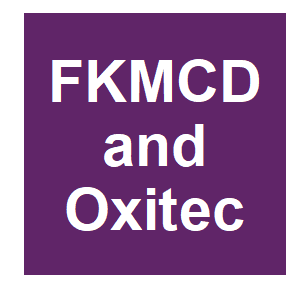
|
FKMCD-OXITEC Mosquito ProjectFKMCD and OXITEC, Website, 2020.
The Florida Keys Mosquito Control District (FKMCD) Board of Commissioners approved the FKMCD-Oxitec Investigational Agreement for the release of Oxitec’s Aedes aegypti mosquitoes. This project will be overseen by FKMCD, the EPA and the Florida Department of Agriculture and ... Keywords: dengue, malaria, microbiome, microbiome engineering, mosquito, wolbachia |

|
Evaluation of genetically modified mosquitoes for the control of vector-borne diseasesGlobal Malaria Programme, WHO - Position Statement, 2020.
In the spirit of fostering innovation, WHO takes the position that all potentially beneficial new technologies, including GMMs, should be investigated to determine whether they could be useful in the continued fight against diseases of public health concern. Such research should ... Keywords: dengue, malaria, microbiome, microbiome engineering, mosquito, wolbachia |
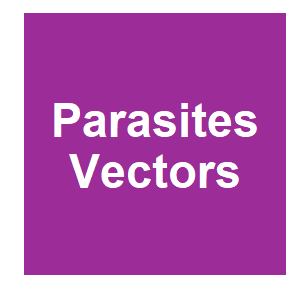
|
Assessing the acoustic behaviour of Anopheles gambiae (s.l.) dsxF mutants: implications for vector controlM. P. Su, M. Georgiades, J. Bagi, K. Kyrou, A. Crisanti and J. T. Albert, Parasites and Vectors, 13:507. 2020.
We analysed sound emissions and acoustic preference in a doublesex mutant previously used to collapse Anopheles gambiae (s.l.) cages. Keywords: dengue, malaria, microbiome, microbiome engineering, mosquito, wolbachia |

|
Yes, Irradiated Sterile Male Mosquitoes Can Be Sexually Competitive!J. Bouyer and M. J. B. Vreysen, Trends in Parasitology, 2020.
Here, we argue that a reduction in quality of the produced sterile male insects is mostly related to the mass-rearing, handling, marking, and release processes, rather than radiation per se. Keywords: dengue, malaria, microbiome, microbiome engineering, mosquito, wolbachia |

|
Gene Drives Could Kill Mosquitoes And Suppress Herpesvirus InfectionsA. Berezow, American Council on Science and Health, 2020.
A team of researchers writing in the journal Nature Communications has shown that a gene drive can be used to suppress infection with cytomegalovirus, a type of herpesvirus. Keywords: dengue, malaria, microbiome, microbiome engineering, mosquito, wolbachia |

|
Risks of releasing gene drives mosquitoes – a possible future scenarioTestbiotech, Testbiotech, 2020.
Genetically engineering the genome of an organism with gene drive means that it will be replicated in every following generation. This allows the altered gene to spread rapidly throughout natural populations, which may be decimated or even eradicated. The video contains both ... Keywords: dengue, malaria, microbiome, microbiome engineering, mosquito, wolbachia |

|
Dynamics of Wild and Sterile Mosquito Population Models with Delayed ReleasingL. M. Cai, International Journal of Bifurcation and Chaos, 30:15. 2020.
We extend the previous ODE models to the delayed releasing models in two different ways of releasing sterile mosquitos, where both constant and exponentially distributed delays are considered, respectively. By applying the theory and methods of delay differential equations, the ... Keywords: dengue, malaria, microbiome, microbiome engineering, mosquito, wolbachia |

|
The Evolving Arsenal Against Mosquito-Born DiseasesJ. Smith, Labiotech.eu, 2020.
As the global climate continues to warm, disease-spreading mosquitoes such as Aedes aegypti are expected to establish themselves in the US and Europe. Keywords: dengue, malaria, microbiome, microbiome engineering, mosquito, wolbachia |

|
Prospects and Pitfalls: Next-Generation Tools to Control Mosquito-Transmitted DiseaseE. P. Caragata, S. Dong, Y. Dong, M. L. Simões, C. V. Tikhe and G. Dimopoulos, Annual Review of Microbiology, 74:455-475. 2020.
A diverse array of next-generation tools has been designed to eliminate mosquito populations or to replace them with mosquitoes that are less capable of transmitting key pathogens. Keywords: dengue, malaria, microbiome, microbiome engineering, mosquito, wolbachia |

|
Do Africans need genetically modified mosquitoes?genetically modified, mosquito, oxitec, autocidal, SIT, perspective, malaria, gene drive synthetic, engagement,, Mail and Guardian, 2020.
The following is an updated version of an article I wrote for the University of Michigan Risk Science Centre a while ago: Keywords: dengue, malaria, microbiome, microbiome engineering, mosquito, wolbachia |

|
Anthony James / Mosquito ModificationBig Picture Science, SETI Institute, 2020.
Anthony James, vector biologist at the University of California, Irvine, describeshow we might genetically modify mosquitoes to make them unable to pass malaria on to humans. Keywords: dengue, malaria, microbiome, microbiome engineering, mosquito, wolbachia |

|
Viewpoint: Is there a scientific basis to ban gene drive technology that can rid us of virus-carrying rodents and mosquitoes?K. Vavitas, Genetic Literacy Project, 2020.
Gene drives may be invaluable tools to control the spread of parasites, invasive species, and disease carriers. But the technology has faced strong opposition from activist groups and some mainstream scientists based on environmental and food safety. Are these concerns valid? Keywords: dengue, malaria, microbiome, microbiome engineering, mosquito, wolbachia |
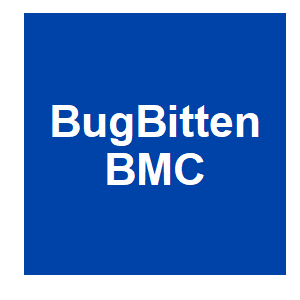
|
Cytoplasmic incompatibility: an autocidal mechanism for mosquito population controlV. Dev, BugBitten BMC, 2020.
Cytoplasmic incompatibility resulting in non-reciprocal fertility is a naturally occurring phenomenon, but remains unexplored to greater extent for the control of insect vector populations. This mechanism deserves priority for mosquito control and reducing disease transmission, ... Keywords: dengue, malaria, microbiome, microbiome engineering, mosquito, wolbachia |

|
Nix alone is sufficient to convert female Aedes aegypti into fertile males and myo-sex is needed for male flightA. Aryan, M. A. E. Anderson, J. K. Biedler, Y. M. Qi, J. M. Overcash, A. N. Naumenko, M. V. Sharakhova, C. H. Mao, Z. N. Adelman and Z. J. Tu, Proceedings of the National Academy of Sciences of the United States of America, 117:17702-17709. 2020.
Here, we report the generation of multiple transgenic lines that express Nix under the control of its own promoter. Genetic and molecular analyses of these lines provided insights unattainable from previous transient experiments. We show that the Nix transgene alone, in the ... Keywords: dengue, malaria, microbiome, microbiome engineering, mosquito, wolbachia |

|
Après les OGM, la nouvelle technique du forçage génétique inquiète écologistes et scientifiquesH. Leussier, Reporterre, 2020.
Les organismes issus du forçage génétique peuvent transmettre, sans autre intervention humaine, des gènes modifiés à tous leurs descendants. Cette technique permettrait d’éradiquer des espèces nuisibles, comme certains moustiques vecteurs de la malaria. Mais des ... Keywords: dengue, malaria, microbiome, microbiome engineering, mosquito, wolbachia |

|
Why are scientists creating genetically modified mosquitoes?The Week Staff, The Week, 2020.
The Week Staff. The Week (2020). Scientists plan to release altered mosquitoes designed to sabotage the species' ability to reproduce. Is this safe? Here's everything you need to know: Keywords: dengue, malaria, microbiome, microbiome engineering, mosquito, wolbachia |

|
Florida Keys delays vote on release of 750 million genetically engineered mosquitoes after public outcryD. Dukule, Friends of the Earth, 2020.
The Florida Keys Mosquito Control District (FKMCD) today delayed its vote on the proposed release of genetically engineered (GE) mosquitoes due to concerns over COVID-19. The decision to delay the vote follows public outcry and scientific dispute over the risks posed to public ... Keywords: dengue, malaria, microbiome, microbiome engineering, mosquito, wolbachia |

|
Release of genetically modified mosquitoes in the Florida Keys put on holdD. Goodhue, Miami Herald, 2020.
Opponents of a plan to release millions of genetically modified mosquitoes in the Florida Keys landed a temporary win on Tuesday. Keywords: dengue, malaria, microbiome, microbiome engineering, mosquito, wolbachia |

|
How do you make a gene drive mosquito?GeneConvene Virtual Institute, GeneConvene Global Collaborative, 2020.
This short video explains and illustrates how transgenic mosquitoes are made in the laboratory. While mosquitoes are the focus of the video, the process shown is used to create transgenic insects of almost any species. Keywords: dengue, malaria, microbiome, microbiome engineering, mosquito, wolbachia |

|
An argument for gene drive technology to genetically control populations of insects like mosquitoes and locustsI. Ronai and B. Lovett, The Conversation, 2020.
The fate of society rests in part on how humans navigate their complicated relationship with insects – trying to save “good” insects and control “bad” ones. Some insects, like mosquitoes, bite people and make them sick – remember Zika? Now the U.S. mosquito season is ... Keywords: dengue, malaria, microbiome, microbiome engineering, mosquito, wolbachia |

|
Researchers convert female mosquitoes to nonbiting males with implications for mosquito controlVirginia Tech, ScienceDaily, 2020.
Researchers convert female mosquitoes to nonbiting males with implications for mosquito control Virginia Tech researchers have proven that a single gene can convert female Aedes aegypti mosquitoes into fertile male mosquitoes and identified a gene needed for male mosquito ... Keywords: dengue, malaria, microbiome, microbiome engineering, mosquito, wolbachia |

|
Genetically Modified Mosquitoes Approved For Insect Population Control In The U.S.J. Blum, HUFFPOST, 2020.Genetically modified mosquitoes with the ability to prevent other mosquitoes from spreading deadly diseases may be making their way to Florida backyards in the near future. British biotech group Oxitec announced on Tuesday that the company had won both federal and state ... Keywords: dengue, malaria, microbiome, microbiome engineering, mosquito, wolbachia |

|
Florida says ‘this is fine’ to release of genetically modified mosquitoesJ. K. Elliot, Global News, 2020.
That’s the question hanging over a recent decision by state regulators in Florida, which would allow the biotech company Oxitec to unleash hundreds of millions of genetically modified male mosquitoes in the Florida Keys. The lab-altered, patented insects are members of Aedes ... Keywords: dengue, malaria, microbiome, microbiome engineering, mosquito, wolbachia |

|
Plan to Release GMO Mosquitoes Moves AheadA. Dier, newser, 2020.
A plan to set loose 750 million genetically modified mosquitoes in Florida and Texas will move forward despite concerns from environmentalists who liken it to a "Jurassic Park experiment." The non-biting male Aedes aegypti mosquitoes developed by British biotechnology company ... Keywords: dengue, malaria, microbiome, microbiome engineering, mosquito, wolbachia |

|
Genetically engineered mosquitoes get EPA approval for Florida release despite objections from environmental groupsS. LaMotte, CNN Health, 2020.
A genetically modified male mosquito named OX5034 has received both state and federal approval to be released into the Florida Keys now through 2022, against the objection of many local residents and a coalition of environmental advocacy groups. "The administration has used ... Keywords: dengue, malaria, microbiome, microbiome engineering, mosquito, wolbachia |

|
Florida Keys plans killer insect attack on disease-carrying mosquitoesP. Brinkmann, UPI, 2020.
The Florida Keys is close to adding a new weapon to help control a mosquito-borne disease -- genetically modified mosquitoes that produce dead offspring. Outbreaks of dengue fever in the Keys in recent years prompted local authorities to consider the genetically modified bugs ... Keywords: dengue, malaria, microbiome, microbiome engineering, mosquito, wolbachia |

|
Research team genetically modifies mosquito; now completing construction of full gene drive systemUniversity of Hawaii, UH Hilo News, 2020.
A research group at the University of Hawai‘i at Hilo is currently completing construction of the full gene drive system of the Hawai‘i-sourced southern house mosquito (Culex quinquefasciatus), and plan to use CRISPR technology to insert it alongside an eye-color phenotype ... Keywords: dengue, malaria, microbiome, microbiome engineering, mosquito, wolbachia |
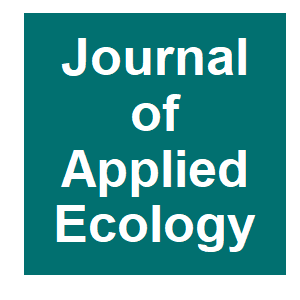
|
Detecting the population dynamics of an autosomal sex ratio distorter transgene in malaria vector mosquitoesP. Pollegioni, A. R. North, T. Persampieri, A. Bucci, R. L. Minuz, D. A. Groneberg, T. Nolan, P. A. Papathanos, A. Crisanti and R. Muller, Journal of Applied Ecology, 11. 2020.
A sex-distorting autosomal transgene has been developed recently in G3 mosquitoes, a laboratory strain of the malaria vectorAnopheles gambiaes.l. Following the World Health Organization guidance framework for the testing of GM mosquitoes, we assessed the dynamics of this ... Keywords: dengue, malaria, microbiome, microbiome engineering, mosquito, wolbachia |

|
Plan to release genetically modified mosquitoes in Florida gets go-aheadO. Milman, The Guardian, 2020.
A plan to release a horde of 750 million genetically modified mosqutioes in Florida and Texas is a step closer to fruition after a state regulator approved the idea, over the objections of many environmentalists. Keywords: dengue, malaria, microbiome, microbiome engineering, mosquito, wolbachia |

|
Hope rises as scientists eliminate malaria mosquitoesA. Adeyemi, New Telegraph, 2020.
A team of researchers led by Imperial College London have spread a genetic modification that distorted the sex ratio through a population of caged Anopheles gambiae mosquitoes using ‘gene drive’ technology. According to the results of their study published yesterday in ... Keywords: dengue, malaria, microbiome, microbiome engineering, mosquito, wolbachia |

|
Malaria mosquitoes eliminated in lab by creating all-male offspringsAishwarya, Inshorts, 2020.
Imperial College London-led team used 'gene drive' technology to spread genetic modification that distorted sex ratio through caged breed of malaria mosquitoes. This caused mosquitoes to produce more male offspring, eventually leading to no female birth. The study suggested such ... Keywords: dengue, malaria, microbiome, microbiome engineering, mosquito, wolbachia |

|
Researchers use “gene drive” technology to eliminate malaria mosquitoes in lab experimentsJ. Ives, News Medical Life Sciences, 2020.
A team led by Imperial College London spread a genetic modification that distorts the sex ratio through a population of caged Anopheles gambiae mosquitoes using 'gene drive' technology. Keywords: dengue, malaria, microbiome, microbiome engineering, mosquito, wolbachia |

|
Genetically-manipulated male mosquitoes could eliminate femalesB. Coxworth, New Atlas, 2020.
Several years ago, we heard how scientists were looking at eradicating malaria-carrying mosquitoes by making the females infertile. Now they're going a step further, by eliminating the females altogether. Keywords: dengue, malaria, microbiome, microbiome engineering, mosquito, wolbachia |

|
Researchers discover way to eliminate malaria carrying mosquitoesS. Digon, International Business Times, 2020.
Researchers from the Imperial College London have come up with a genetic modification that will pave the way for the elimination of malaria mosquitoes. Scientists say that the alteration distorts the sex ratio of caged Anopheles gambiae mosquitoes using what they call a ‘gene ... Keywords: dengue, malaria, microbiome, microbiome engineering, mosquito, wolbachia |

|
The malaria mosquito is eliminated in the lab by creating a population of all malesNewsDesk, Instant, 2020.
A team led by Imperial College London disseminates genetic modification that distorts the sex ratio through the Anopheles gambiae mosquito population that is locked up using ‘gene drive’ technology. Keywords: dengue, malaria, microbiome, microbiome engineering, mosquito, wolbachia |

|
Malaria mosquitoes eliminated in lab by creating all male populationsH. Dunning, Imperial College London, 2020.
A team led by Imperial College London spread a genetic modification that distorts the sex ratio through a population of caged Anopheles gambiae mosquitoes using ‘gene drive’ technology. Keywords: dengue, malaria, microbiome, microbiome engineering, mosquito, wolbachia |

|
Converting endogenous genes of the malaria mosquito into simple non-autonomous gene drives for population replacementA. Hoermann, S. Tapanelli, P. Capriotti, E. K. G. Masters, T. Habtewold, G. K. Christophides and N. Windbichler, bioRxiv, 2020.
Here we explore how minimal genetic modifications of endogenous mosquito genes can convert them directly into non-autonomous gene drives without disrupting their expression. Keywords: dengue, malaria, microbiome, microbiome engineering, mosquito, wolbachia |

|
Mutant mosquitoes one step closer to release in Florida, Texas this summer. Why?K. Camero, The Charlotte Observer, 2020.
The U.S. Environmental Protection Agency (EPA) approved an experimental use permit for the British biotech company Oxitec to test the modified mosquitoes in the U.S. for the first time, according to a statement from the agency Keywords: dengue, malaria, microbiome, microbiome engineering, mosquito, wolbachia |

|
Genetically Engineered Male Mosquitos to be Released in Florida and Other Parts of US to Curb Zika and Dengue SpreadStaff Reporter, The Science Times, 2020.
The Environmental Protection Agency has recently approved a new and controversial field test aimed at reducing their population. Keywords: dengue, malaria, microbiome, microbiome engineering, mosquito, wolbachia |

|
EPA Grants First Permit to Test Genetically Modified MosquitoesAdam Allington, Bloomberg Law, 2020.
British biotech company Oxitec Ltd was granted an experimental use permit to release a genetically engineered type of the mosquito species Aedes aegypti, which is a known vector of Zika virus and viruses that cause yellow fever and dengue fever, the Environmental Protection ... Keywords: dengue, malaria, microbiome, microbiome engineering, mosquito, wolbachia |

|
EPA Approves Experimental Use Permit to Test Innovative Biopesticide Tool to Better Protect Public HealthEPA, EPA, 2020.
Today, after extensive evaluation of the best available science and public input, the U.S. Environmental Protection Agency (EPA) has granted an experimental use permit (EUP) to Oxitec Ltd. to field test the use of genetically engineered Aedes aegypti mosquitoes as a way to reduce ... Keywords: dengue, malaria, microbiome, microbiome engineering, mosquito, wolbachia |

|
Gene editing could fight malaria by causing only male mosquitos to be bornL. Dormehl, Digital Trends, 2020.
What’s the theoretically easiest way to ensure that a population of mosquitos is not able to sustain itself through breeding? Make sure that there aren’t enough females, of course. That’s the exploratory approach being pioneered by researchers at the U.K.’s Imperial ... Keywords: dengue, malaria, microbiome, microbiome engineering, mosquito, wolbachia |

|
Auditing preparedness for vector control field studiesC. M. Collins and M. M. Quinlan, American Journal of Tropical Medicine and Hygiene, 102:707-710. 2020.
The value of baseline entomological data to any future area-wide release campaign relies on the application of consistent methods to produce results comparable across different times and places in a stepwise progression to larger releases. Traditionally, standard operating ... Keywords: dengue, malaria, microbiome, microbiome engineering, mosquito, wolbachia |

|
Editorial Expression of Concern: Transgenic Aedes aegypti Mosquitoes Transfer Genes into a Natural PopulationB. R. Evans, P. Kotsakiozi, A. L. Costa-Da-Silva, R. S. Ioshino, L. Garziera, M. C. Pedrosa, A. Malavasi, J. F. Virginio, M. L. Capurro and J. R. Powell, Scientific Reports, 10:2. 2020.
Shortly after publication of this Article in September 2019, the Editors were alerted to concerns regarding the interpretation of the data and some of the conclusions. Keywords: dengue, malaria, microbiome, microbiome engineering, mosquito, wolbachia |

|
Vector genetics, insecticide resistance and gene drives: an agent-based modeling approach to evaluate malaria transmission and eliminationP. Selvaraj, E. A. Wenger, D. Bridenbecker, N. Windbichler, J. R. Russell, J. Gerardin, C. A. Bever and M. Nikolov, bioRxiv, 2020.01.27.920421. 2020.
Vector control has been a key component in the fight against malaria for decades, and chemical insecticides are critical to the success of vector control programs worldwide. However, increasing resistance to insecticides threatens to undermine these efforts. Understanding the ... Keywords: dengue, malaria, microbiome, microbiome engineering, mosquito, wolbachia |

|
Phased Conditional Approach for Mosquito Management Using Sterile Insect TechniqueJ. Bouyer, H. Yamada, R. Pereira, K. Bourtzis and M. J. B. Vreysen, Trends in Parasitology, 2020.
Mosquito-borne diseases represent a major threat to humankind. Recently, the incidence of malaria has stopped decreasing while that of dengue is increasing exponentially. Alternative mosquito-control methods are urgently needed. The sterile insect technique (SIT) has seen ... Keywords: dengue, malaria, microbiome, microbiome engineering, mosquito, wolbachia |

|
Engineering Bugs, Resurrecting Species: The Wild World of Synthetic Biology for ConservationP. Rejcek, Singularity Hub, 2020.
Imagine a world where a mosquito bite is just an itchy annoyance. No malaria. No dengue fever. Last month, scientists announced they had taken one more step toward that vision. A paper in the journal PLOS Pathogens described how they synthetically engineered mosquitoes to stop ... Keywords: dengue, malaria, microbiome, microbiome engineering, mosquito, wolbachia |

|
Synthetically engineered mosquitos could neutralize dengue virus infectionL. Woolfe, Biotechniques, 2020.
Dengue virus infection can be severe and life threatening. New research has developed an improved approach to controlling this deadly infection. Keywords: dengue, malaria, microbiome, microbiome engineering, mosquito, wolbachia |

|
Mosquitoes genetically modified to combat dengueDowntoearth, Down To Earth, 2020.
For the first time mosquitoes have been engineered to fight all 4 known types of dengue Keywords: dengue, malaria, microbiome, microbiome engineering, mosquito, wolbachia |
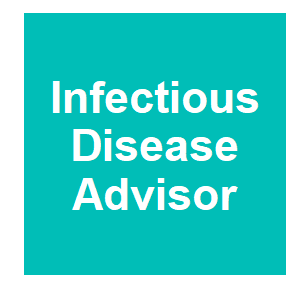
|
Genetically Modified Mosquitos Neutralize Dengue VirusN. P. Dyal, Infectious Disease Advisor, 2020.
Researchers at the University of California San Diego have identified a target gene in mosquitos that renders the insects completely refractory to all 4 serotypes of the dengue virus and thus, incapable of transmitting the virus to humans, according to study results published in ... Keywords: dengue, malaria, microbiome, microbiome engineering, mosquito, wolbachia |

|
Genetically modified mosquitoes resist all dengue viruses, researchers findB. Burton, C|NET, 2020.
This new kind of mosquito can't spread any form of the deadly disease. Keywords: dengue, malaria, microbiome, microbiome engineering, mosquito, wolbachia |

|
Genetically engineered mosquitoes resist spreading any form of dengueK. Servick, Science, 2020.
Recover from dengue once, and you’re not necessarily free and clear. The mosquito-borne disease marked by fever, rash, and debilitating pain results from any of four genetically distinct versions of the dengue virus. Previously infected people who get hit with a second of these ... Keywords: dengue, malaria, microbiome, microbiome engineering, mosquito, wolbachia |

|
Genetically engineered mosquitoes halt Dengue spreadL. Thomas, New Medical Life Sciences, 2020.
A new study published in the journal PLOS Pathogens in January 2020 reports the development of mosquitoes that have been genetically modified to resist infection by several types of the dengue virus. This is the first time ever that all types of the virus have been targeted by ... Keywords: dengue, malaria, microbiome, microbiome engineering, mosquito, wolbachia |

|
Researchers Genetically Modify First Batch Of Mosquitoes Resistant To All Four Types Of DengueM. Dapcevich, IFL Science, 2020.
An international team of researchers have synthetically engineered a breed of mosquitos that are resistant to all four types of the dengue virus for the first time, a feat they say may someday suppress the disease and stop its transmission to humans. Keywords: dengue, malaria, microbiome, microbiome engineering, mosquito, wolbachia |

|
Genetically engineered mosquitoes are immune to all strains of dengue virus for first timeG. Weule, ABC News Online, 2020.
Locked in a secure lab near Melbourne is the newest addition in the fight against dengue: genetically engineered mosquitoes that are resistant to all strains of the potentially deadly virus. Keywords: dengue, malaria, microbiome, microbiome engineering, mosquito, wolbachia |

|
Mosquitoes resistant to all types of dengue virus engineeredN. Lavars, New Atlas, 2020.
Last year, scientists at Australia's Commonwealth Scientific and Industrial Research Organisation (CSIRO) made a big breakthrough, engineering mosquitoes that break the chain of Zika virus transmission. But they did so with multiple targets in mind, with the mosquito in question, ... Keywords: dengue, malaria, microbiome, microbiome engineering, mosquito, wolbachia |
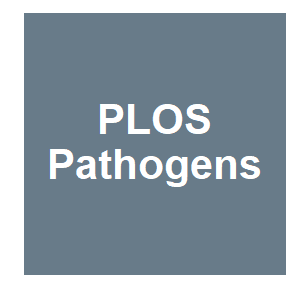
|
Broad dengue neutralization in mosquitoes expressing an engineered antibodyA. Buchman, S. Gamez, M. Li, I. Antoshechkin, H.-H. Li, H.-W. Wang, C.-H. Chen, M. J. Klein, J.-B. Duchemin, J. E. Crowe, Jr., P. N. Paradkar and O. S. Akbari, PLOS Pathogens, 16:e1008103. 2020.
Author summary With limited success of traditional vector control methods to curb dengue infections and more than half of the world’s population still at risk, there is a need for novel strategies to reduce its impact on public health. Recent advances in genetic technologies ... Keywords: dengue, malaria, microbiome, microbiome engineering, mosquito, wolbachia |

|
Development of a confinable gene drive system in the human disease vector Aedes aegyptiM. Li, T. Yang, N. P. Kandul, M. Bui, S. Gamez, R. Raban, J. Bennett, H. M. Sánchez C, G. C. Lanzaro, H. Schmidt, Y. Lee, J. M. Marshall and O. S. Akbari, eLife, 9:e51701. 2020.
Aedes aegypti is the principal mosquito vector for many arboviruses that increasingly infect millions of people every year. With an escalating burden of infections and the relative failure of traditional control methods, the development of innovative control measures has become ... Keywords: dengue, malaria, microbiome, microbiome engineering, mosquito, wolbachia |

|
Experimental population modification of the malaria vector mosquito, Anopheles stephensiT. B. Pham, C. H. Phong, J. B. Bennett, K. Hwang, N. Jasinskiene, K. Parker, D. Stillinger, J. M. Marshall, R. Carballar-Lejarazú and A. A. James, PLOS Genetics, 15:e1008440. 2019.
The experimental introduction of manipulated genes into insect species has a long history in basic genetics. Recent advances in genome editing technologies have spurred considerable effort to exploit these methodologies to provide genetic solutions to some of the worst medical ... Keywords: dengue, malaria, microbiome, microbiome engineering, mosquito, wolbachia |

|
The bold plan to end malaria with a gene driveVOX, , 2019.
How genetically engineered mosquitoes might defeat a disease that kills millions of children. This describes gene drive and features work from a group (Target Malaria) that is developing this technology for use against malaria Keywords: dengue, malaria, microbiome, microbiome engineering, mosquito, wolbachia |

|
Wiping out the daughters: Burkina Faso’s controversial mosquito experimentBoersma, H. and J. Bastmeijer, The Guardian, 2019.
A radical experiment to genetically modify a strain of mosquito in order to stop them breeding malaria-carrying daughters is one of the latest efforts to tackle the deadly scourge of malaria Keywords: dengue, malaria, microbiome, microbiome engineering, mosquito, wolbachia |

|
Two unresolved issues in community engagement for field trials of genetically modified mosquitoesD. B. Resnik, Pathogens and Global Health, 113:238-245. 2019.
There is an emerging consensus among scientists, ethicists, and public health officials that substantive and effective engagement with communities and the wider public is required prior to releasing genetically modified mosquitoes into the environment. Keywords: dengue, malaria, microbiome, microbiome engineering, mosquito, wolbachia |

|
Transgenic Aedes aegypti Mosquitoes Transfer Genes into a Natural PopulationB. R. Evans, P. Kotsakiozi, A. L. Costa-da-Silva, R. S. Ioshino, L. Garziera, M. C. Pedrosa, A. Malavasi, J. F. Virginio, M. L. Capurro and J. R. Powell, Scientific Reports, 9:6. 2019.
We genotyped the release strain and the target Jacobina population before releases began for >21,000 single nucleotide polymorphisms (SNPs). Genetic sampling from the target population six, 12, and 27-30 months after releases commenced provides clear evidence that portions of the ... Keywords: dengue, malaria, microbiome, microbiome engineering, mosquito, wolbachia |

|
Self-destructing mosquitoes and sterilized rodents: the promise of gene drivesM. Scudellari, Nature, 571:160-162. 2019.
Altering the genomes of entire animal populations could help to defeat disease and control pests, but researchers worry about the consequences of unleashing this new technology. Keywords: dengue, malaria, microbiome, microbiome engineering, mosquito, wolbachia |
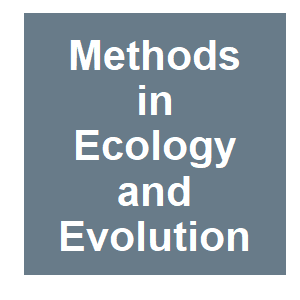
|
MGDrivE: A modular simulation framework for the spread of gene drives through spatially-explicit mosquito populationsSánchez C, HMW, Sean L.; Bennett, Jared B.; Marshall, John M., Methods in Ecology and Evolution, 10:1-24. 2019.
Malaria, dengue, Zika, and other mosquito-borne diseases continue to pose a major global health burden through much of the world, despite the widespread distribution of insecticide-based tools and antimalarial drugs. The advent of CRISPR/Cas9-based gene editing and its ... Keywords: dengue, malaria, microbiome, microbiome engineering, mosquito, wolbachia |

|
Knowledge engagement in gene drive research for malaria controlHartley, ST, D.; Ledingham, K.; Coulibaly, M.; Diabate, A.; Dicko, B.; Diop, S.; Kayondo, J.; Namukwaya, A.; Nourou, B.; Toe, L. P., PLOS Neglected Tropical Diseases, 13:e0007233. 2019.
Scientists and funding bodies have made repeated calls for public engagement in gene drive. In 2016, the National Academies of Sciences, Engineering, and Medicine (NASEM) published its report, Gene Drives on the Horizon: Advancing Science, Navigating Uncertainty, and Aligning ... Keywords: dengue, malaria, microbiome, microbiome engineering, mosquito, wolbachia |

|
Engineered resistance to Zika virus in transgenic Aedes aegypti expressing a polycistronic cluster of synthetic small RNAsBuchman, AG, S.; Li, M.; Antoshechkin, I.; Li, H. H.; Wang, H. W.; Chen, C. H.; Klein, M. J.; Duchemin, J. B.; Paradkar, P. N.; Akbari, O. S., Proceedings of the National Academy of Sciences of the United States of America, 116:3656-3661. 2019.
Recent Zika virus (ZIKV) outbreaks have highlighted the necessity for development of novel vector control strategies to combat arboviral transmission, including genetic versions of the sterile insect technique, artificial infection with Wolbachia to reduce population size and/or ... Keywords: dengue, malaria, microbiome, microbiome engineering, mosquito, wolbachia |

|
Why I study the most dangerous animal on earth — mosquitoes | Fredros OkumuTED, TED, 2018.
This is a TED talk by an African scientist who reflects on the impact of malaria on Africans and efforts to eliminate the diseases and the need for continued efforts. Keywords: dengue, malaria, microbiome, microbiome engineering, mosquito, wolbachia |

|
Synthetic biology mosquitoes: Pioneering solution emerges to counter fears over using genetic engineerting to control ZikaEnglish, C, Genetic Literacy Project, 2018.
In fall 2015, the biotech company Oxitec planned to release genetically engineered mosquitoes throughout the Florida Keys capable of stopping their wild relatives from spreading Zika, a dangerous virus that causes birth defects and damages the nervous system. These lab-bread ... Keywords: dengue, malaria, microbiome, microbiome engineering, mosquito, wolbachia |

|
Gene drives could wipe out mosquitoesNew Scientist, , 2018.
This is a short video describing how gene drive is being considered for controlling malaria transmitting mosquitoes in Africa as part of ongoing malaria eradication efforts. Keywords: dengue, malaria, microbiome, microbiome engineering, mosquito, wolbachia |

|
A swarm of mutant mosquitoes is out to eradicate malariaO'Mahony, J, Wired, 2018.
Over the next year in the village of Bana, Burkina Faso, a group of scientists will set loose up to 10,000 mosquitoes sprinkled with fluorescent dust. The sterile, male swarm will represent the first ever release of a genetically modified, malaria carrying mosquito species into ... Keywords: dengue, malaria, microbiome, microbiome engineering, mosquito, wolbachia |

|
Gene DriveCollins, CH, Scientific American, 2018.
Research into a genetic engineering technology that can permanently change the traits of a population or even an entire species is progressing rapidly. The approach uses gene drives—genetic elements that pass from parents to unusually high numbers of their offspring, thereby ... Keywords: dengue, malaria, microbiome, microbiome engineering, mosquito, wolbachia |

|
How science could wipe out disease-carrying mosquitoes and save livesElliot, JK, Global News, 2018.
Mosquitoes kill hundreds of thousands of people every year by spreading disease in tropical areas. They’re also the worst part of many cottage weekends and camping trips in North America.; ; But it doesn’t have to be that way.; ; Scientists are developing two methods for ... Keywords: dengue, malaria, microbiome, microbiome engineering, mosquito, wolbachia |
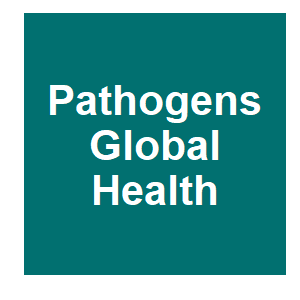
|
Population modification of Anopheline species to control malaria transmissionR. Carballar-Lejarazú and A. A. James, Pathogens and Global Health, 111:424-435. 2018.
Vector control strategies based on population modification of Anopheline mosquitoes may have a significant role in the malaria eradication agenda. They could consolidate elimination gains by providing barriers to the reintroduction of parasites and competent vectors, and allow ... Keywords: dengue, malaria, microbiome, microbiome engineering, mosquito, wolbachia |
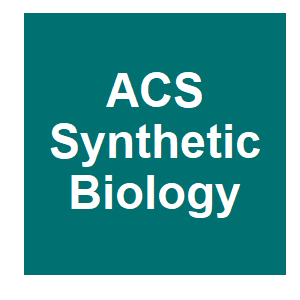
|
Engineered Reciprocal Chromosome Translocations Drive High Threshold, Reversible Population Replacement in DrosophilaBuchman, ABI, Tobin; Marshall, John M.; Akbari, Omar S.; Hay, Bruce A., ACS Synthetic Biology, 7:1359-1370. 2018.
Replacement of wild insect populations with transgene-bearing individuals unable to transmit disease or survive under specific environmental conditions using gene drive provides a self-perpetuating method of disease prevention. Mechanisms that require the gene drive element and ... Keywords: dengue, malaria, microbiome, microbiome engineering, mosquito, wolbachia |
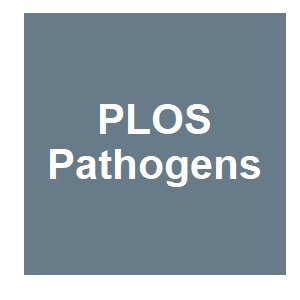
|
CRISPR/Cas9 -mediated gene knockout of Anopheles gambiae FREP1 suppresses malaria parasite infectionDong, YS, Maria L.; Marois, Eric; Dimopoulos, George, PLOS Pathogens, 14:e1006898. 2018.
The causative agent of malaria, Plasmodium, has to complete a complex infection cycle in the Anopheles gambiae mosquito vector in order to reach the salivary gland from where it can be transmitted to a human host. The parasite’s development in the mosquito relies on numerous ... Keywords: dengue, malaria, microbiome, microbiome engineering, mosquito, wolbachia |

|
Informed consent in field trials of gene-drive mosquitoesP. A. Kolopack and J. V. Lavery, Gates Open Research, 2017.
We argue that informed consent from individual research participants in gene drive trials may be required: (1) when blood and other forms of clinical data are collected from them, as will likely be the case in some studies involving epidemiological endpoints, such as the ... Keywords: dengue, malaria, microbiome, microbiome engineering, mosquito, wolbachia |

|
A secret weapon against Zika and other mosquito-borne diseasesNina Federoff, TEDxMidAtlantic, 2017.
Where did Zika come from, and what can we do about it? Molecular biologist Nina Fedoroff takes us around the world to understand Zika's origins and how it spread, proposing a controversial way to stop the virus -- and other deadly diseases -- by preventing infected mosquitoes ... Keywords: dengue, malaria, microbiome, microbiome engineering, mosquito, wolbachia |

|
CRISPR’s Gene Drive Could Revive Extinct Species–or Create New Ones | Jennifer DoudnaBig Think, , 2017.
A leading gene editing scientist, Jennifer Doudna, discusses gene drive and their applications as well as de-extinction technologies. Keywords: dengue, malaria, microbiome, microbiome engineering, mosquito, wolbachia |

|
SCIENTIFIC OPINION: In response to the referral of 12 October 2015 concerning use of genetically modified mosquitoes for vector controlHigh Council for Biotechnology, High Council for Biotechnology (France), 2017.
The Scientific Committee’s opinion describes emerging vector control techniques using GM mosquitoes, the current state of research into and development of these techniques and the outcomes of initial experiments worldwide. To date, only one technique has been developed to an ... Keywords: dengue, malaria, microbiome, microbiome engineering, mosquito, wolbachia |

|
Illustrated experiment: modifying mosquitoes to save millions of livesVolpicelli, G, Wired, 2017.
Malaria, a disease transmitted by a type of mosquito called Anopheles, kills 500,000 people every year, most of them in Africa. But Andrea Crisanti, professor of molecular parasitology at London's Imperial College, has a plan to eradicate it in many countries. Keywords: dengue, malaria, microbiome, microbiome engineering, mosquito, wolbachia |

|
A Revolutionary Genetic Experiment is Planned for a West African Village – If Residents AgreeIke Swetitz, STAT, 2017.
This small village of mud-brick homes in West Africa might seem the least likely place for an experiment at the frontier of biology. Yet scientists here are engaged in what could be the most promising, and perhaps one of the most frightening, biological experiments of our ... Keywords: dengue, malaria, microbiome, microbiome engineering, mosquito, wolbachia |
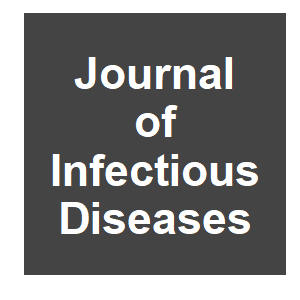
|
Advances in vector control science: Rear-and-release strategies show promise… but don’t forget the basicsRitchie, SAJ, B. J., Journal of Infectious Diseases, 215:S103-S108. 2017.
Both chikungunya and Zika viruses have recently swept from Africa across the Pacific to the Americas, causing major outbreaks of disease in humans. In the meantime, dengue epidemics continue throughout the tropics. Traditional vector control programs based on strategies from ... Keywords: dengue, malaria, microbiome, microbiome engineering, mosquito, wolbachia |
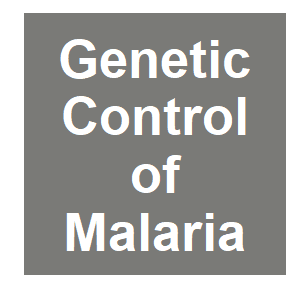
|
Concept and history of genetic controlScott, M. J. and Benedict, M. Q., Genetic Control of Malaria and Dengue, 2:31-54. 2016.
Genetic control of insects is an established method, mainly for insects that are important crop and veterinary pests such as medflies and screwworm. Efforts to use the same technologies against insects of medical importance, especially mosquitoes, have had limited success. The ... Keywords: dengue, malaria, microbiome, microbiome engineering, mosquito, wolbachia |

|
Prospects and challenges of CRISPR/Cas genome editing for the study and control of neglected vector-borne nematode diseasesM. Zamanian and E. C. Andersen, The FEBS Journal, 283:3204-3221. 2016.
Neglected tropical diseases caused by parasitic nematodes inflict an immense health and socioeconomic burden throughout much of the developing world. Current estimates indicate that more than two billion people are infected with nematodes, resulting in the loss of 14 million ... Keywords: dengue, malaria, microbiome, microbiome engineering, mosquito, wolbachia |

|
When Extinction Is a Humanitarian CauseAdelman, Z, MIT Technology Review, 2016.
Humans have driven species to extinction through our hunger, our ignorance, our desire for economic growth, and our indifference. Will one species of mosquito be the first we eliminate for humanitarian ; The mosquito is Aedes aegypti. It is commonly known as the yellow fever ... Keywords: dengue, malaria, microbiome, microbiome engineering, mosquito, wolbachia |
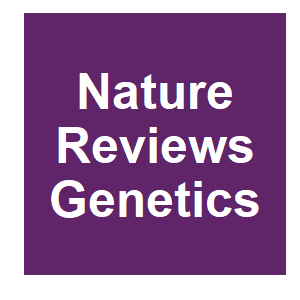
|
Cheating evolution: engineering gene drives to manipulate the fate of wild populationsChamper, JB, A.; Akbari, O. S., Nature Reviews Genetics, 17:146-159. 2016.
Engineered gene drives - the process of stimulating the biased inheritance of specific genes - have the potential to enable the spread of desirable genes throughout wild populations or to suppress harmful species, and may be particularly useful for the control of vector-borne ... Keywords: dengue, malaria, microbiome, microbiome engineering, mosquito, wolbachia |

|
Science and Technology Committee Genetically Modified InsectsUK Parliament, UK Parliament, 2015.
The UK is a world leader in the development of this technology. The European Union’s regulatory process, however, is likely to hold back progress. There is a moral duty to test the potential of the technology. We therefore support further research and call for action to test ... Keywords: dengue, malaria, microbiome, microbiome engineering, mosquito, wolbachia |

|
Gene drive turns mosquitoes into malaria fightersPennisi, E, Science, 350:1014-1014. 2015.
The war against malaria has a new ally: a controversial technology for spreading genes throughout a population of animals. In the laboratory, researchers have harnessed a so-called gene drive to efficiently endow mosquitoes with genes that make them immune to the malaria ... Keywords: dengue, malaria, microbiome, microbiome engineering, mosquito, wolbachia |

|
Biosafety for human health and the environment in the context of the potential use of genetically modified mosquitoes (GMMs)WHO/TDR, WHO/TDR Training Manual, 2015.
This Training manual: Biosafety for human health and the environment in the context of the potential use of genetically modified mosquitoes (GMMs) is based on biosafety training courses on GMMs undertaken in Africa, Asia and Latin America from 2008–2011. The courses were ... Keywords: dengue, malaria, microbiome, microbiome engineering, mosquito, wolbachia |

|
GM mosquitoes a ‘quantum leap’ towards tackling malariaA. Vaughan, Guardian, 2014.
New technique injects mosquitoes with a gene that results in mostly male offspring, eventually leading to a population crash Keywords: dengue, malaria, microbiome, microbiome engineering, mosquito, wolbachia |

|
Ethical issues in field trials of genetically modified disease-resistant mosquitoesD. B. Resnik, Developing World Bioethics, 14:37-46. 2012.
Mosquito-borne diseases take a tremendous toll on human populations, especially in developing nations. In the last decade, scientists have developed mosquitoes that have been genetically modified to prevent transmission of mosquito-borne diseases, and field trials have been ... Keywords: dengue, malaria, microbiome, microbiome engineering, mosquito, wolbachia |

|
Genetic mapping a meiotic driver that causes sex ratio distortion in the mosquito Aedes aegyptiShin, DM, A.; Severson, D. W., Journal of Heredity, 103:303-307. 2012.
An endogenous meiotic driver in the dengue and yellow fever vector mosquito Aedes aegypti can cause highly male-biased sex ratio distortion in crosses from suitable genetic backgrounds. We previously selected a strain that carries a strong meiotic drive gene (D) linked with the ... Keywords: dengue, malaria, microbiome, microbiome engineering, mosquito, wolbachia |

|
Requirements for effective malaria control with homing endonuclease genesDeredec, AG, H. C. J.; Burt, A., Proceedings of the National Academy of Sciences of the United States of America, 108:e874-e880. 2011.
Malaria continues to impose a substantial burden on human health. We have previously proposed that biological approaches to control the mosquito vector of disease could be developed using homing endonuclease genes (HEGs), a class of selfish or parasitic gene that exists naturally ... Keywords: dengue, malaria, microbiome, microbiome engineering, mosquito, wolbachia |
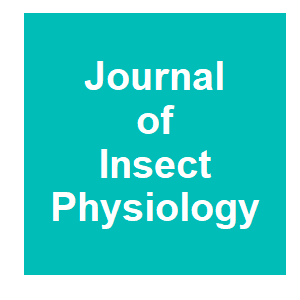
|
Transcript profiling of the meiotic drive phenotype in testis of Aedes aegypti using suppressive subtractive hybridizationShin, DYJ, L. Z.; Lobo, N. F.; Severson, D. W., Journal of Insect Physiology, 57:1220-1226. 2011.
The meiotic drive gene in Aedes aegypti is tightly linked with the sex determination locus on chromosome 1, and causes highly male-biased sex ratios. We prepared cDNA libraries from testes from the Ae. aegypti 137 strain (driving) and RED strain (non-driving), and used ... Keywords: dengue, malaria, microbiome, microbiome engineering, mosquito, wolbachia |

|
Progress and prospects for the use of genetically modified mosquitoes to inhibit disease transmissionA. A. James, J. D. Mumford, S. L. James and Y. T. Touré, WHO/TDR, 2010.
The use of genetically modified mosquitoes (GMMs) for disease control has social, economic and ethical implications, so it is important that the World Health Organization (WHO) and its partners provide guidance to countries on these issues. In collaboration with the Foundation ... Keywords: dengue, malaria, microbiome, microbiome engineering, mosquito, wolbachia |

|
Genetic strategies for controlling mosquito-borne diseasesF. Gould, K. Magori and Y. Huang, American Scientist, 94:238. 2006.
Malaria kills more than a million people each year, primarily children under the age of six. Dengue fever is less deadly, but an outbreak can debilitate millions of people and easily overwhelm doctors and hospitals in tropical cities. Keywords: dengue, malaria, microbiome, microbiome engineering, mosquito, wolbachia |

|
Genetic strategies for controlling mosquito-borne diseasesF. Gould, K. Magori and Y. Huang, American Scientist, 94:238. 2006.
Malaria kills more than a million people each year, primarily children under the age of six. Dengue fever is less deadly, but an outbreak can debilitate millions of people and easily overwhelm doctors and hospitals in tropical cities Keywords: dengue, malaria, microbiome, microbiome engineering, mosquito, wolbachia |
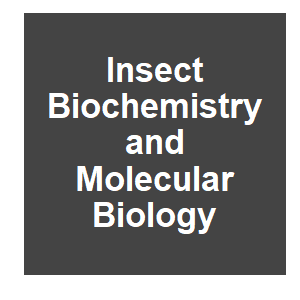
|
Wolbachia and cytoplasmic incompatibility in mosquitoesSinkins, SP, Insect Biochemistry and Molecular Biology, 34:723-729. 2004.
Wolbachia are maternally inherited bacteria that induce cytoplasmic incompatibility in mosquitoes, and are able to use these patterns of sterility to spread themselves through populations. For this reason they have been proposed as a gene drive system for mosquito genetic ... Keywords: dengue, malaria, microbiome, microbiome engineering, mosquito, wolbachia |

|
Mariner transposition and transformation of the yellow fever mosquito, Aedes aegyptiC. J. Coates, N. Jasinskiene, L. Miyashiro and A. A. James, Proceedings of the National Academy of Sciences of the United States of America, 95:3748-3751. 1998.
The mariner transposable element is capable of interplasmid transposition in the embryonic soma of the yellow fever mosquito, Aedes aegypti. To determine if this demonstrated mobility could be utilized to genetically transform the mosquito, a modified mariner element marked with ... Keywords: dengue, malaria, microbiome, microbiome engineering, mosquito, wolbachia |

|
Thte genetic basis of resistance and sensitivity to the meiotic drive gene D in the mosquito Aedes aegypti L.Wood, RJO, N. A., Genetica, 72:69-79. 1987.
A study has been made on the genetic basis of meiotic drive at the Distorter (D) locus which, in coupling with the male-determining gene (or region) M on the Y chromosome, causes production of excess male progeny. Its effect is regulated by the sensitivity/resistance of the X ... Keywords: dengue, malaria, microbiome, microbiome engineering, mosquito, wolbachia |

|
Abnormal salivary gland puff associated with meiotic drive in mosquitos (Diptera, Culicidae)Sweeny, TLG, P.; Barr, A. R., Journal of Medical Entomology, 24:623-627. 1987.
A meiotic drive factor, distorter (d), has been described previously for Culex pipiens L. mosquitoes. Males homozygous for the gene (Md/md) produce few female offspring owing to breakage of the female-determining dyad of chromosome 1 (the sex chromosome) during the first meiotic ... Keywords: dengue, malaria, microbiome, microbiome engineering, mosquito, wolbachia |
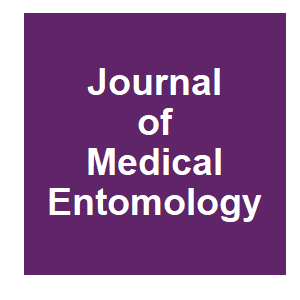
|
A cage replacement experiment involving introduction of genes for refractoriness to Plasmodium-yoelii-nigeriensis into a population of Anopheles gambiae (Diptera, Culicidae)P. M. Graves and C. F. Curtis, Journal of Medical Entomology, 19:127-133. 1982.
A caged population of Anopheles gambiae was allowed to breed continuously and samples of the progeny were tested for susceptibility to Plasmodium yoelii nigeriensis. Males of a strain partially refractory to this parasite were released into the population for an 18-wk period. The ... Keywords: dengue, malaria, microbiome, microbiome engineering, mosquito, wolbachia |
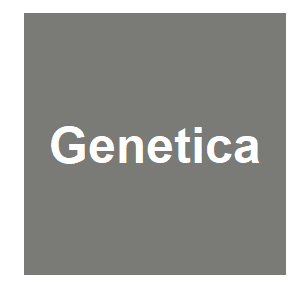
|
Meiotic drive at the D(MD) locus and fertility in the mosquito, Aedes aegypti (L)Youngson, JW, H. M.; Wood, R. J., Genetica, 54:335-340. 1981.
The Distorter gene D in Aedes aegypti shows meiotic drive when associated with the male determining M gene, causing sex ratio distortion in favour of males. The fertility of Distorter (MD /ms) and normal (M/m-) males has been compared after mating them to a series of 20 females ... Keywords: dengue, malaria, microbiome, microbiome engineering, mosquito, wolbachia |
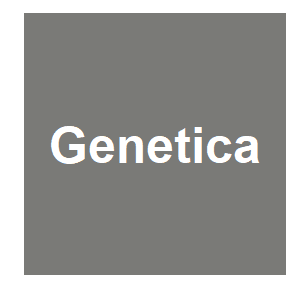
|
Combining the meiotic drive gene-D and the translocation-T1 in the mosquito, Aedes aegypti (L) .1: Sex-ratio distortion and fertilityPearson, AMW, R. J., Genetica, 51:203-210. 1980.
Sex-ratio distortion has been investigated in males carrying the Y(M)-linked meiotic-drive gene D, from three different strains (Bozo, Caracas and Trinidad), paired with Chipei X-chromosomes highly sensitive to D. The effect of D was tested on its own and also associated with a ... Keywords: dengue, malaria, microbiome, microbiome engineering, mosquito, wolbachia |

|
Transporting marker gene re (red eye) into a laboratory cage population of Aedes aegypti (Diptera Culicidae), using meiotic drive at MD locusWood, RJC, L. M.; Hamilton, A.; Whitelaw, A., Journal of Medical Entomology, 14:461-464. 1978.
An attempt has.been made to use the meiotic drive gene MD to transport a marker re (red eye) into a laboaratory population of the mosquito Aedes aegypti. The experiment produced an increase in re frequency, but also indicated that this gene has unexpectedly high fitness in the ... Keywords: dengue, malaria, microbiome, microbiome engineering, mosquito, wolbachia |

|
Sex ratio distortion caused by meiotic drive in a mosquito Culex pipiensSweeny, TLB, A. R., Genetics, 88:427-446. 1978.
A genetic factor, distorter (d), has been discovered that upsets the normal sex ratio of 1 : 1 and results in a large excess of males in Culex pipiens. The effect can be explained by a sex-linked, recessive gene. Males homozygous for the gene (Md/md) produce few female offspring; ... Keywords: dengue, malaria, microbiome, microbiome engineering, mosquito, wolbachia |

|
Transporting marker gene re (red eye) into a laboratory cage population of Aedes-aegypti (Diptera Culicidae), using meiotic drive at MD locusR. J. Wood, L. M. Cook, A. Hamilton and A. Whitelaw, Journal of Medical Entomology, 14:461-464. 1977.
An attempt has been made to use the meiotic drive gene MD to transport a marker re (redeye) into a laboratory population of the mosquito Aedes aegypti. The experiment produced an increase in re frequency, but also indicated that this gene has unexpectedly high fitness in the ... Keywords: dengue, malaria, microbiome, microbiome engineering, mosquito, wolbachia |
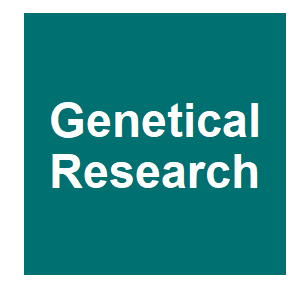
|
Resistance to meiotic drive at MD locus in an Indian wild population of Aedes aegyptiSuguna, SGW, R. J.; Curtis, C. F.; Whitelaw, A.; Kazmi, S. J., Genetical Research, 29:123-132. 1977.
Females from an Indian wild population of Aedes aegypti were crossed to males carrying the sex ratio distorter factor MB which shows meiotic drive. Progenies from ¥1 males were tested for sex ratio distortion, i.e. the chromosomes from the wild females were screened for their ... Keywords: dengue, malaria, microbiome, microbiome engineering, mosquito, wolbachia |
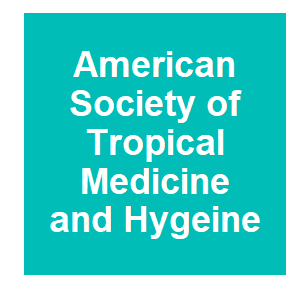
|
Field trial of competitive displacement of Aedes-polynesiensis by Aedes-albopictus on a Pacific atollL. Rosen, L. E. Rozeboom, W. C. Reeves, J. Saugrain and D. J. Gubler, American Journal of Tropical Medicine and Hygiene, 25:906-913. 1976.
Prior laboratory studies and field observations suggested that it might be possible to reduce the size of the population of, or eliminate, Aedes polynesiensis by the introduction of Aedes albopictus. The former mosquito is the principal vector of nonperiodic filariasis caused by ... Keywords: dengue, malaria, microbiome, microbiome engineering, mosquito, wolbachia |
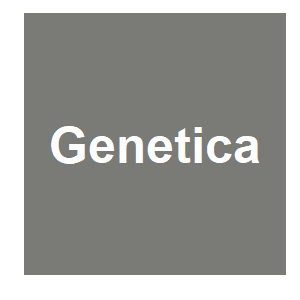
|
Between family variation in sex-ratio in Trinidad (T-30) strain of Aedes-aegypti (L) indicating differences in sensitivity to meiotic drive gene MDWood, RJ, Genetica, 46:345-361. 1976.
Sex ratio in the Trinidad (T-30) strain of Aedes aegypti has remained constant at around 43%? during seventeen years of laboratory culture. The divergence from 50% is due to meiotic drive by the MD gene on the Y chromosome. The driving Y chromosome gives a much more distorted sex ... Keywords: dengue, malaria, microbiome, microbiome engineering, mosquito, wolbachia |

|
Inherited male-producing factor in Aedes aegyptiG. B. Craig, W. A. Hickey and R. C. Vandehey, Science, 132:1887-1889. 1960.
An inherited factor causes a predominance of males in certain strains and in progeny of single pairs of Aedes aegypti L. This factor appears to be transmitted only by males and is not due to differential mortality, at least in postgametic stages. Mass release of male-producing ... Keywords: dengue, malaria, microbiome, microbiome engineering, mosquito, wolbachia |

Contact
David O’Brochta
Foundation for the
National Institutes of Health
geneconvenevi@fnih.org
RSS

